Forums
- Forums
- Duggy's Reference Hangar
- USAAF / USN Library
- K-class blimp
K-class blimp
Post a reply
- Go to Previous topic
- Go to Next topic
- Go to Welcome
- Go to Introduce Yourself
- Go to General Discussion
- Go to Screenshots, Images and Videos
- Go to Off topic
- Go to Works in Progress
- Go to Skinning Tips / Tutorials
- Go to Skin Requests
- Go to IJAAF Library
- Go to Luftwaffe Library
- Go to RAF Library
- Go to USAAF / USN Library
- Go to Misc Library
- Go to The Ops Room
- Go to Made in Germany
- Go to Campaigns and Missions
- Go to Works in Progress
- Go to Juri's Air-Raid Shelter
- Go to Campaigns and Missions
- Go to Works in Progress
- Go to Skinpacks
- Go to External Projects Discussion
- Go to Books & Resources
-
6 years agoSun Dec 09 2018, 11:58am
 Main AdminThe K-class blimp was a class of blimps (non-rigid airship) built by the Goodyear Aircraft Company of Akron, Ohio for the United States Navy. These blimps were powered by two Pratt & Whitney Wasp nine-cylinder radial air-cooled engines, each mounted on twin-strut outriggers, one per side of the control car that hung under the envelope. Before and during World War II, 134 K-class blimps were built, configured for patrol and anti-submarine warfare operations and were extensively used in the Navy?s anti-submarine efforts in the Atlantic and Pacific Ocean areas.
Main AdminThe K-class blimp was a class of blimps (non-rigid airship) built by the Goodyear Aircraft Company of Akron, Ohio for the United States Navy. These blimps were powered by two Pratt & Whitney Wasp nine-cylinder radial air-cooled engines, each mounted on twin-strut outriggers, one per side of the control car that hung under the envelope. Before and during World War II, 134 K-class blimps were built, configured for patrol and anti-submarine warfare operations and were extensively used in the Navy?s anti-submarine efforts in the Atlantic and Pacific Ocean areas.
Development
The K-class blimp was a product of the austere times of the American depression. In 1937, K-2 was ordered from Goodyear as part of a contract that also bought the L-1, (Goodyear?s standard advertising and passenger blimp). K-2 was the production prototype for future K-class airship purchases. K-2 flew for the first time at Akron, Ohio on December 6, 1938 and was delivered to the Navy at NAS Lakehurst, New Jersey on December 16. The envelope capacity of the K-2?404,000 ft? (11,440 m?)?was the largest for any USN blimp up to that time. K-2 was flown extensively as a prototype, and continued to operate testing new equipment, techniques, and performing whatever tasks were needed, including combat patrols in World War II.
On October 24, 1940, the Navy awarded a contract to Goodyear for six airships (K-3 through K-8) that were assigned the designation Goodyear ZNP-K. These blimps were designed for patrol and escort duties and were delivered to the Navy in late 1941 and early 1942. K-3 through K-8 had only minor modifications to K-2's design, the only major change was in engines from Pratt & Whitney R-1340-16s to Wright R-975-28s. The Wright engine/propeller combination proved excessively noisy and was replaced in later K-ships with slightly modified Pratt & Whitney engines. The K-3 cost $325,000.[1] A series of orders for more K-class blimps followed. Twenty-one additional blimps (K-9 through K-30) were ordered on 14 October 1942. On 9 January 1943, 21 more blimps (K-31 through K-50) were ordered. The envelope size of K-9 through K-13 was increased to 416,000 ft? (11,780 m?) and those delivered thereafter used an envelope of 425,000 ft? (12,035 m?). The final contract for the K-class blimp were awarded in mid-1943 for 89 airships. Four blimps from this order were later canceled. The remaining deliveries were assigned numbers K-51 through K-136. But, the number K-136 was not assigned to a specific airship as the control car assigned for K-136 was used to replace the car for K-113. The original car for K-113 was destroyed in a fire.
Operational history
The K-ships were used for anti-submarine warfare (ASW) duties in the Atlantic and Pacific Oceans as well as the Mediterranean Sea. All equipment was carried in a forty foot long control car. The installed communications and instrumentation equipment allowed night flying. The blimps were equipped with the ASG-type radar, that had a detection range of 90 mi (140 km), sonobuoys, and magnetic anomaly detection (MAD) equipment. The K-ships carried four Mk-47 depth bombs, two in a bomb bay and two externally, and were equipped with a .50 in (12.7 mm) Browning machine gun in the forward part of the control car. An aircrew of 10 normally operated the K-ships, consisting of a command pilot, two co-pilots, a navigator/pilot, airship rigger, an ordnanceman, two mechanics, and two radiomen.
On 1 June 1944, two K-class blimps of United States Navy (USN) Airship Patrol Squadron 14 (ZP-14) completed the first transatlantic crossing by non-rigid airships. K-123 and K-130 left South Weymouth, MA on 28 May 1944 and flew approximately 16 hours to Naval Station Argentia, Newfoundland. From Argentia, the blimps flew approximately 22 hours to Lajes Field on Terceira Island in the Azores. The final leg of the first transatlantic crossing was about a 20-hour flight from the Azores to Craw Field in Port Lyautey (Kenitra), French Morocco. The first pair of K-ships were followed by K-109 & K-134 and K-112 & K-101 which left South Weymouth on 11 and 27 June 1944, respectively. These six blimps initially conducted nighttime anti-submarine warfare operations to complement the daytime missions flown by FAW-15 aircraft (PBYs and B-24s) using magnetic anomaly detection to locate U-boats in the relatively shallow waters around the Straits of Gibraltar. Later, ZP-14 K-ships conducted minespotting and minesweeping operations in key Mediterranean ports and various escort missions including that of the convoy carrying Franklin Roosevelt and Winston Churchill to the Yalta Conference in early 1945. In late April 1945, K-89 and K-114 left Weeksville NAS in North Carolina and flew a southern transatlantic route to NAS Bermuda, the Azores, and Port Lyautey where they arrived on 1 May 1945 as replacements for Blimp Squadron ZP-14.
The ability of the K-ships to hover and operate at low altitudes and slow speeds resulted in detection of numerous enemy submarines as well as assisting in search and rescue missions. The K-ships had an endurance capability of over 24 hours which was an important factor in the employment of ASW tactics.
The mooring system for the K-ship was a 42 ft (12.8 m) high triangular mooring mast that was capable of being towed by a tractor. For advance bases where moving the mooring mast was not needed, a conventional stick mast was used. A large ground crew was needed to land the blimps and moor them to the mast.
During the war, one K-ship?K-74?was lost to enemy action when it was shot down by U-134 in the Straits of Florida on 18 July 1943. The crew was picked up eight hours later, except for one man who was attacked by a shark and drowned just before being rescued.
In 1947, Goodyear operated one K ship, K-28 as part of its commercial advertising blimp fleet. The K ship was named Puritan and was the largest ever Goodyear blimp, acquired from the Navy primarily to experiment with various running copy signs attached to the side of the envelope. Costly to operate and maintain, The Puritan was retired from the Goodyear fleet in April, 1948 after only one year of operation.
The last "K Ship"?K-43?was retired in March 1959.
Airship designations
During the life of the K-class airship, the U.S. Navy used three different designation systems. From 1922 through World War II, the Navy used a four character designator. The K-class blimps were designated ZNP-K where the "Z" signified lighter-than-air; "N" denoted non-rigid; "P" denoted a patrol mission; and "K" denoted the type or class of airship.
In April 1947, the General Board of the U.S. Navy modified the designation system for airships. The second character of the designator was dropped as the Board dropped the code for rigid airships so that the "N" for non-rigid was no longer needed. The designation for the K-class blimps then became ZPK.
In April 1954, the designation system for lighter-than-air airships was further modified so that it conformed to the designation system for heavier-than-air aircraft. By this time the ZPK blimps had been retired from service and only the later version K-Class blimps were in service. Under the 1954 system the ZP2K blimp became the ZSG-2, the ZP3K became the ZSG-3, the ZP4K became the ZSG-4, and the ZP5K became the ZS2G-1. In new designation system, the "Z" signified lighter-than-air; the "S" was the type denoting an anti-submarine warfare mission; the numeral (i.e., "2") was the model; and the "G" was for Goodyear, the manufacturer?s letter in the Navy's designation system. The final numeral denoted the series of the vehicle within the type/model.
Goodyear K-97 control car NAS Santa Ana.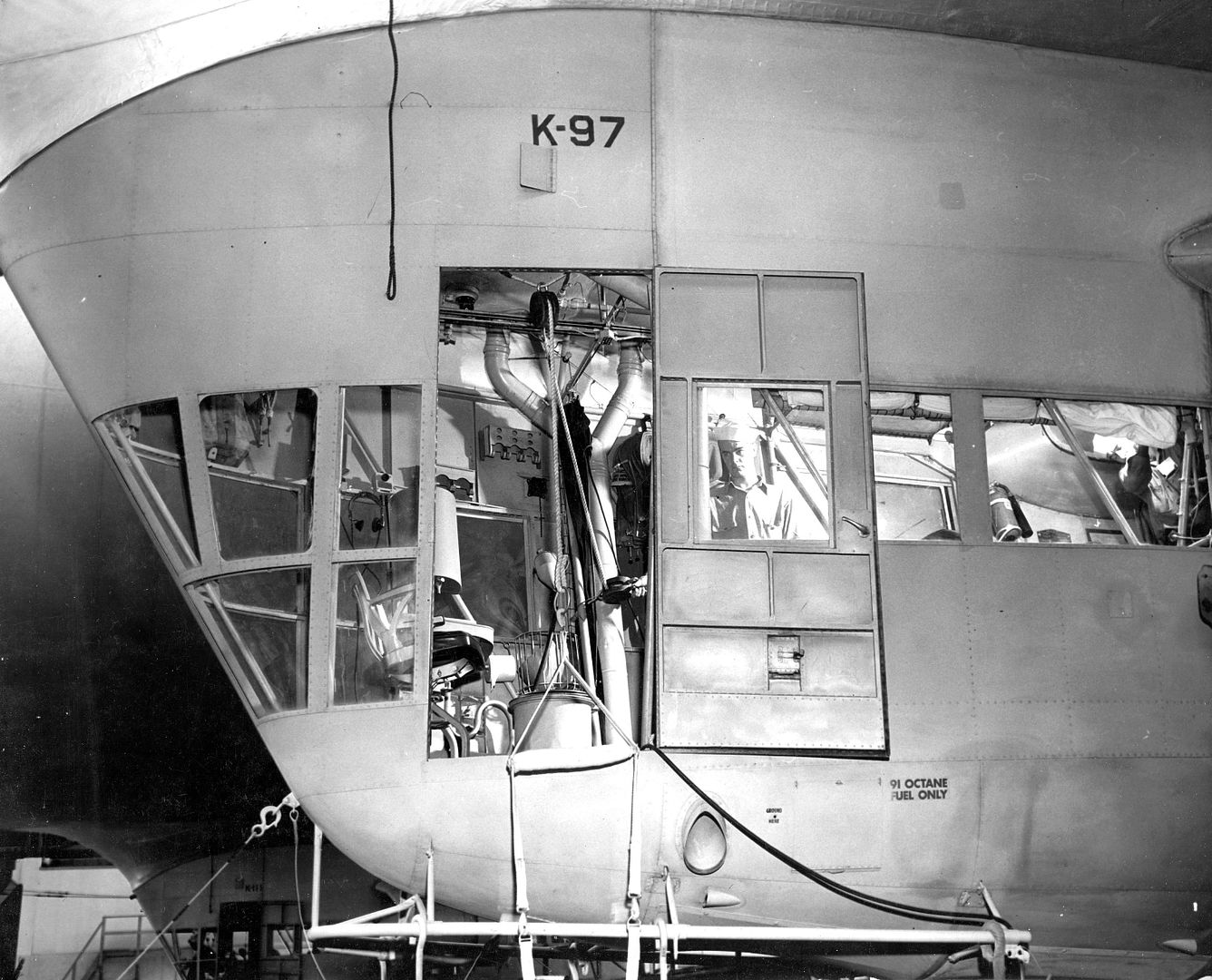
Captain George Henry Mills 1895-1975 boards Navy blimp K-32 NAS Richmond FL 1943.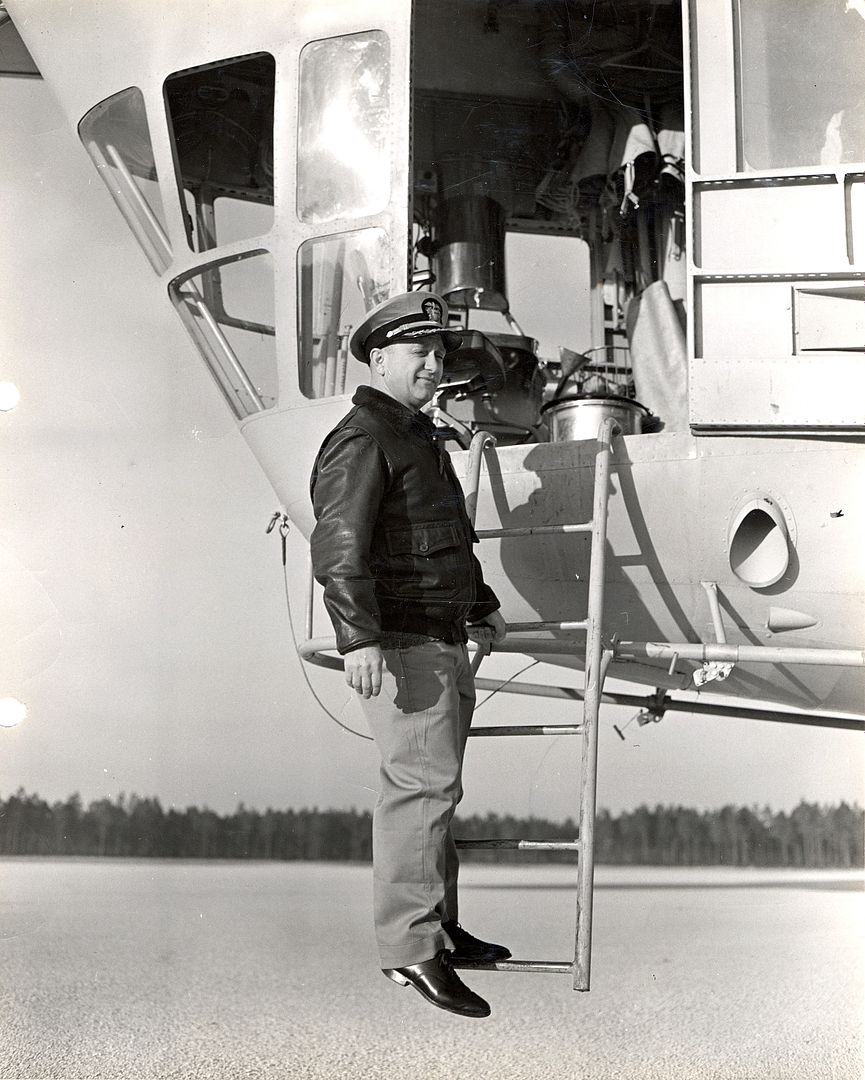
K-28 a K type airship of the U.S. Navy Airship Squadron 24 ZP-24 being moved out of its hangar.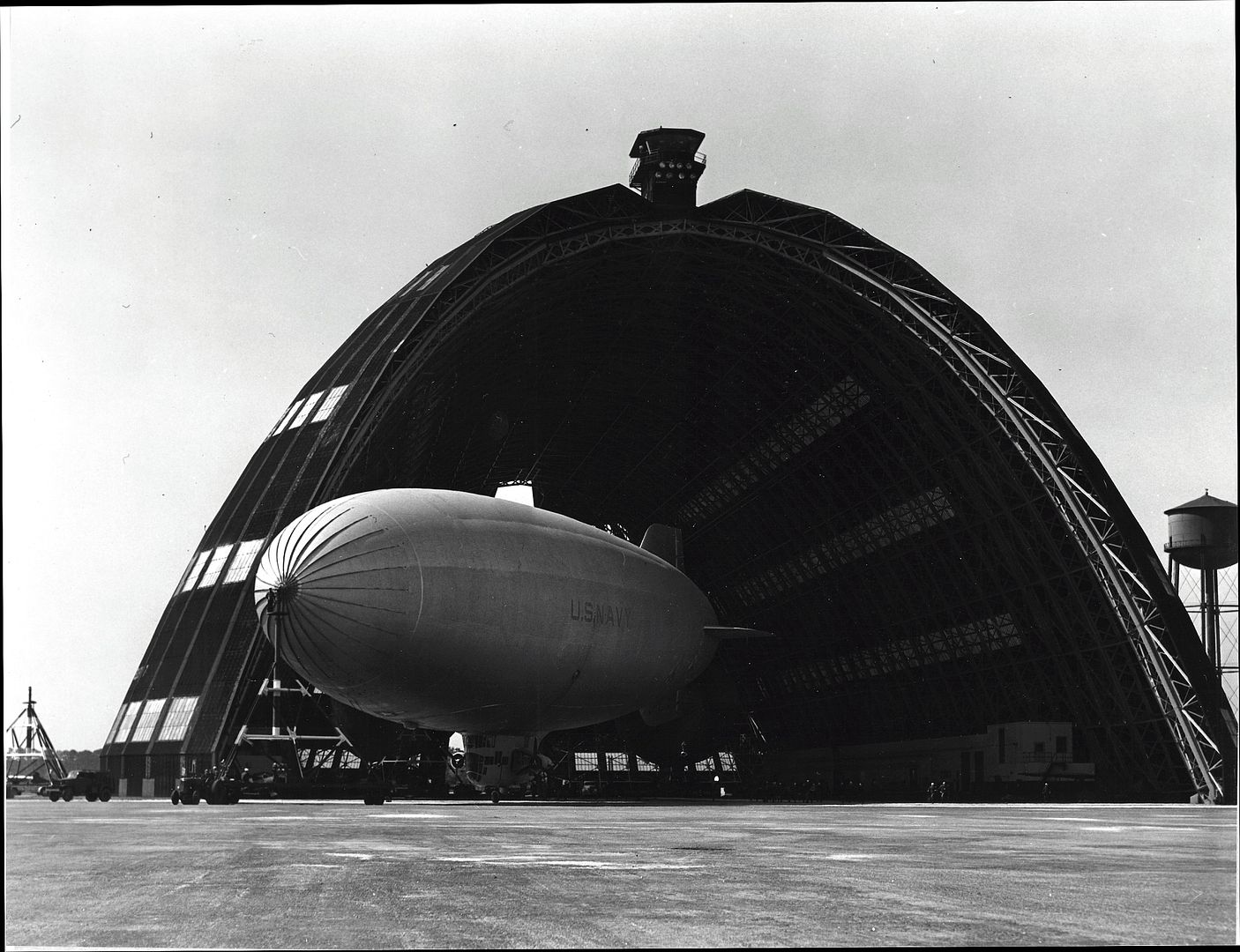
K-28 a U.S. Navy Airship Squadron 24 ZP-24 K type airship taking off at the start of a patrol.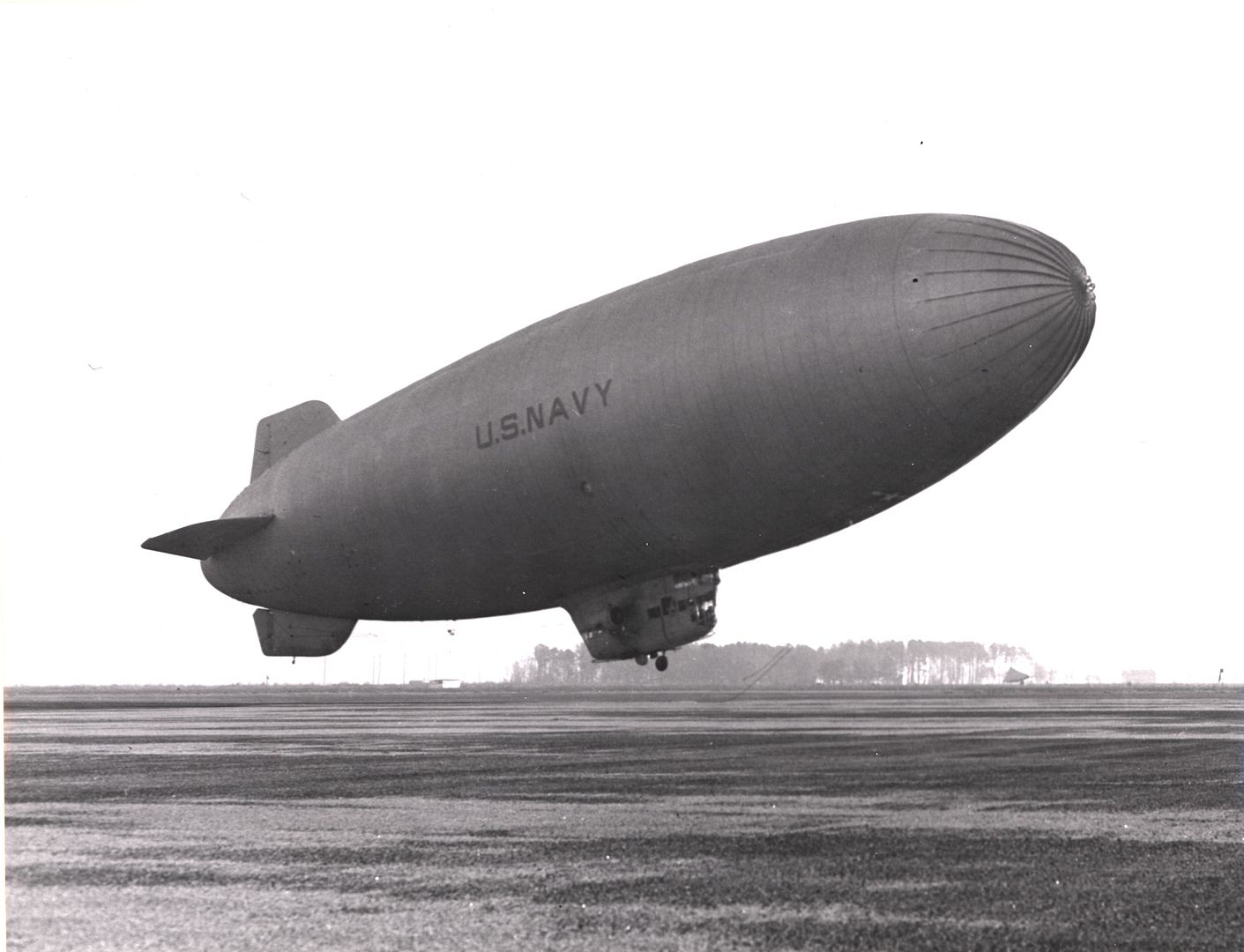
U.S. Navy Airship Squadron 24 ZP-24 personnel loading food on K-28 a K type airship before a mission.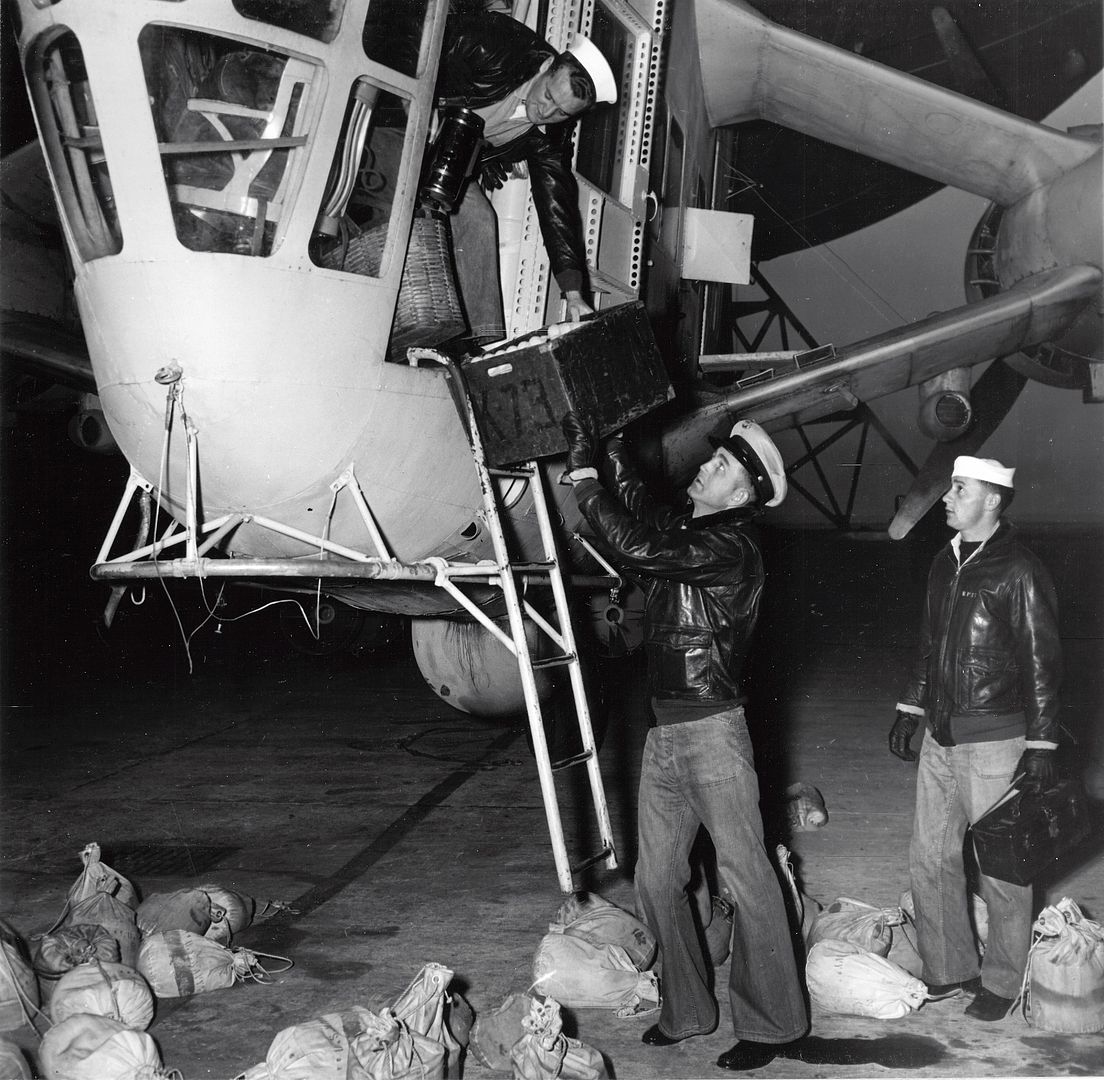
Two crewmen of U.S. Navy Airship Squadron 24 ZP-24 loading a 325 pound aircraft Mk 17 depth charge on K-28 a K type airship.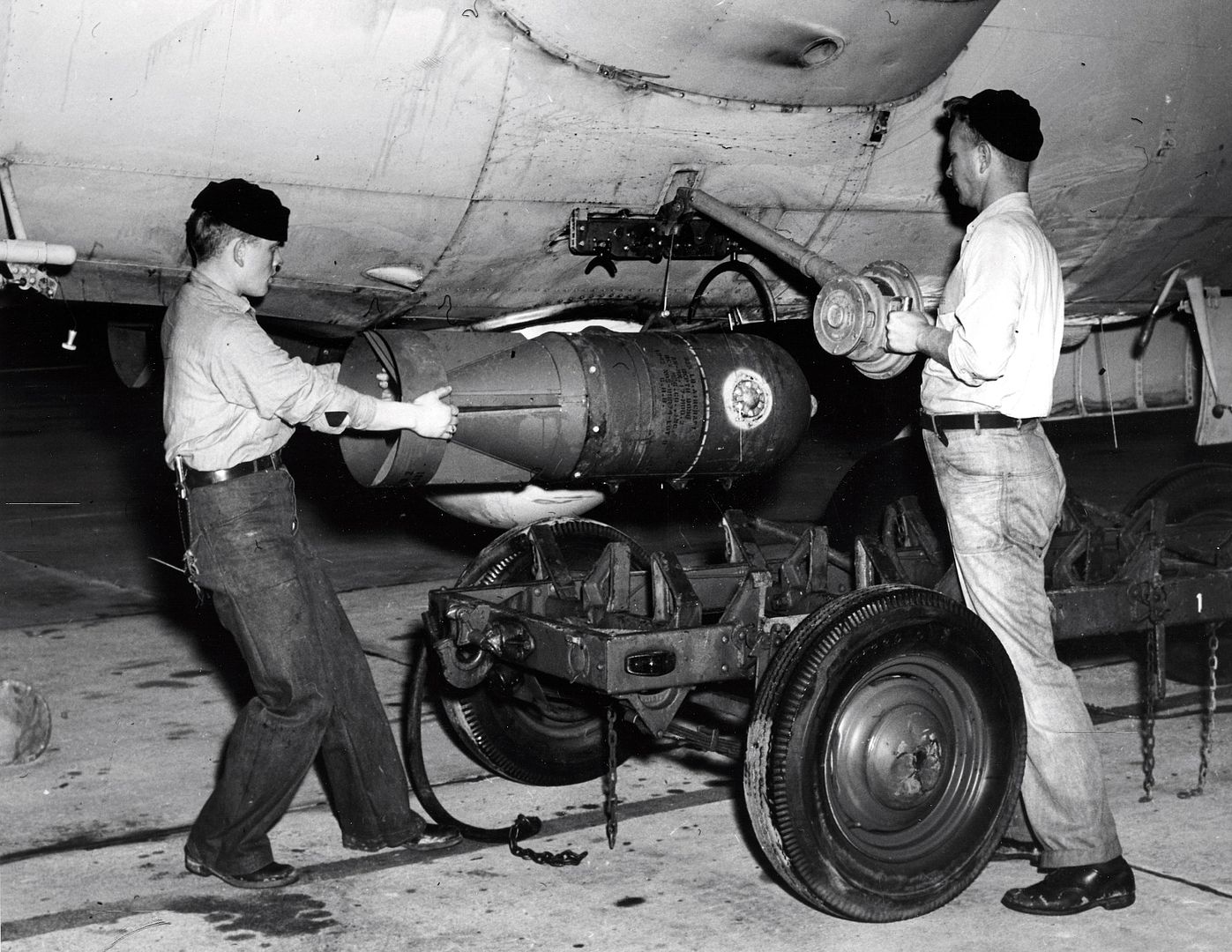
A U.S. Navy Airship Squadron 24 ZP-24 crew member brings up the landing gear of K-28 a K type airship at the start of a patrol.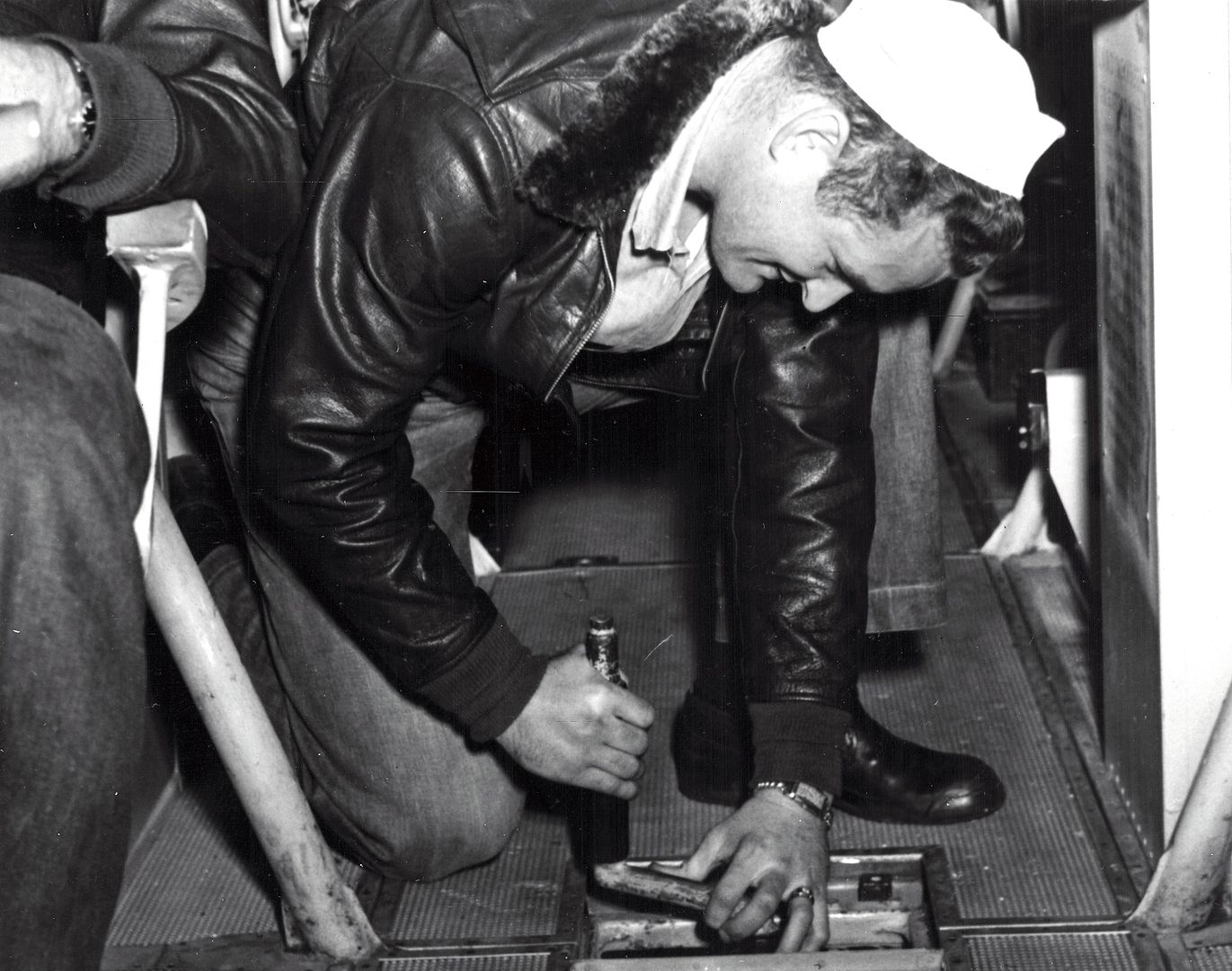
A member of the crew of K-28 a U.S. Navy Airship Squadron 24 ZP-24 blimp inspecting cables prior to a mission.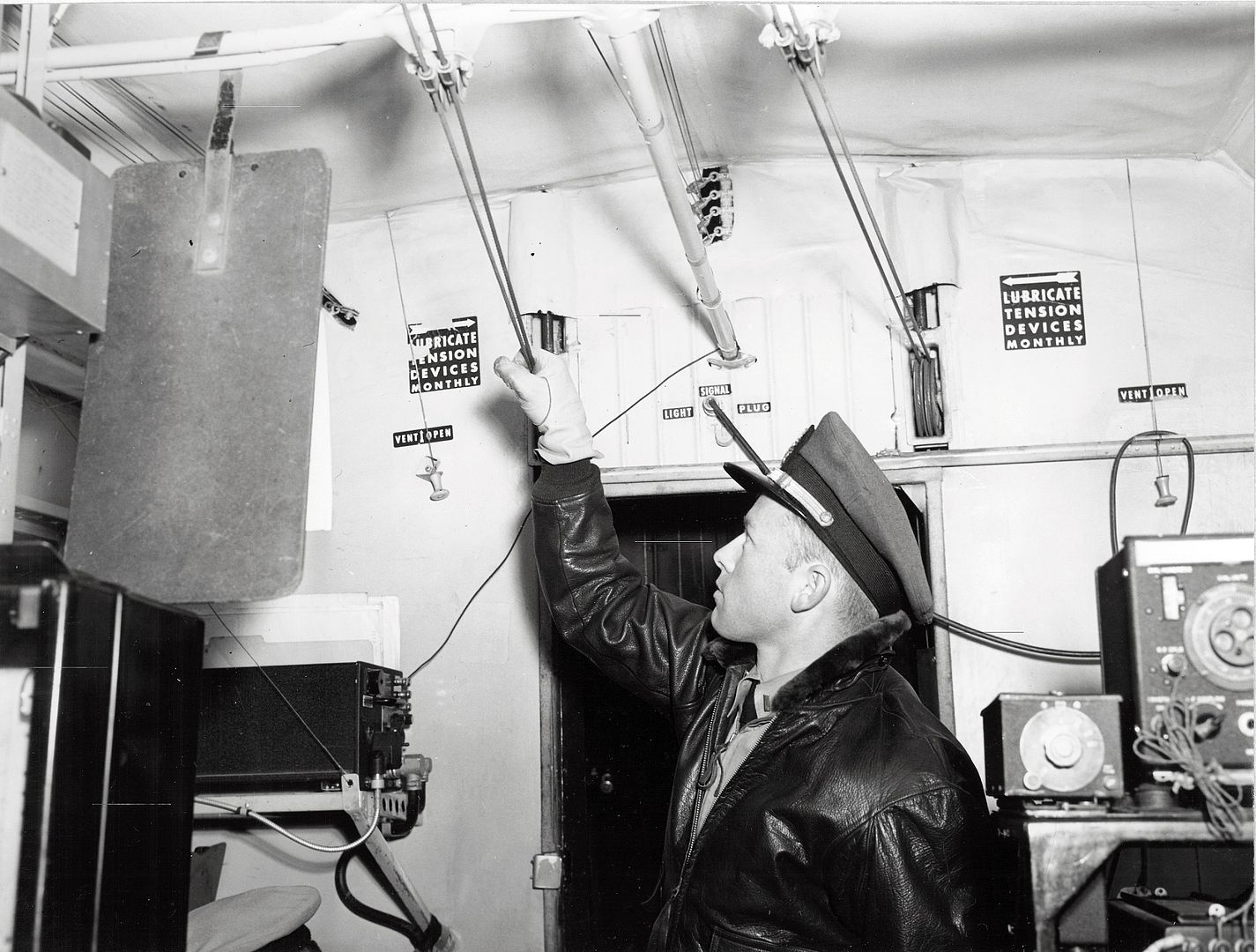
A member of the crew of K-28 U.S. Navy Airship Squadron 24 ZP-24 hands out life vests at the start of a patrol.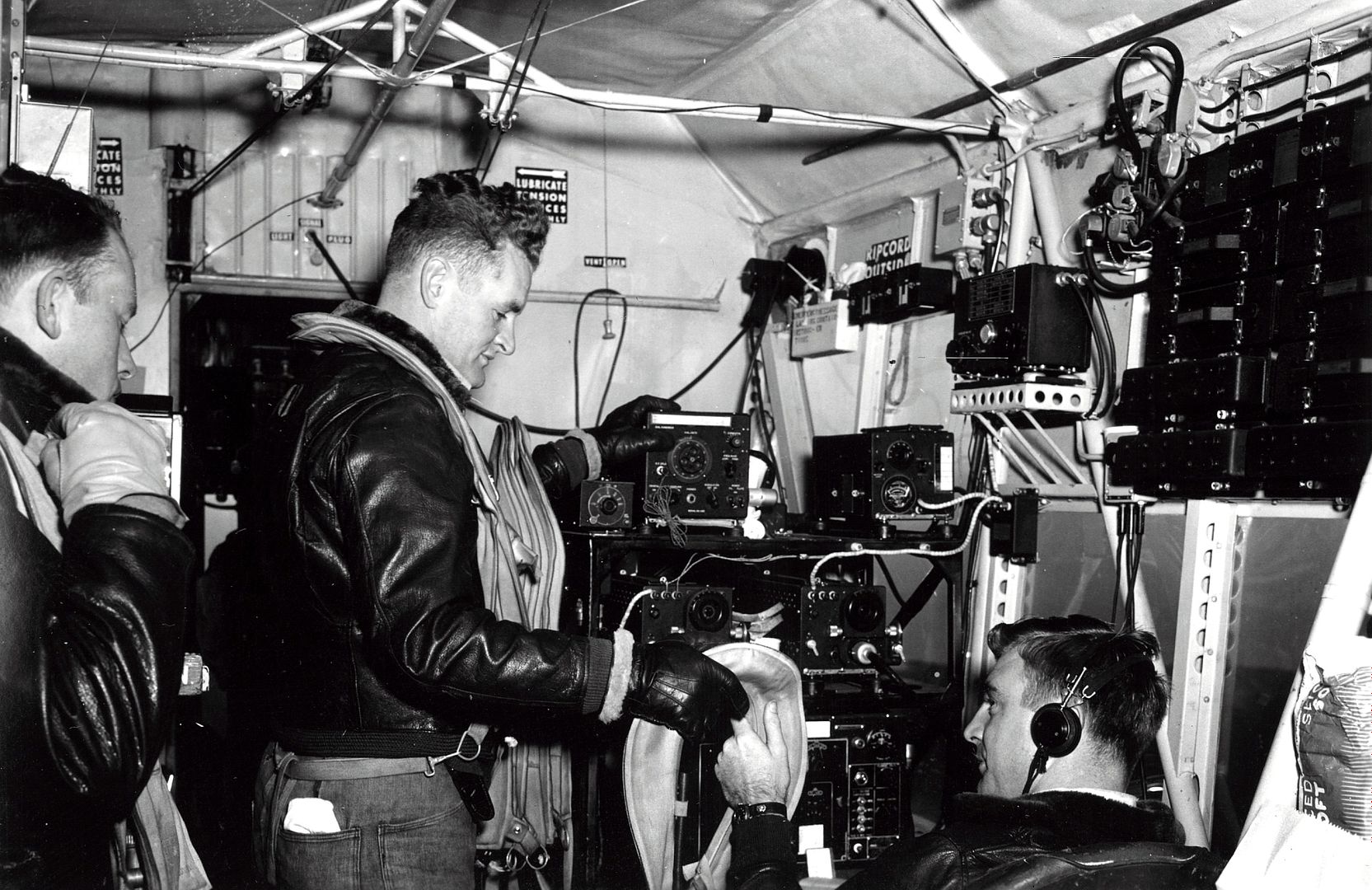
A crewman prepares a meal in the tiny galley of K-28 a U.S. Navy Airship Squadron 24 ZP-24 airship.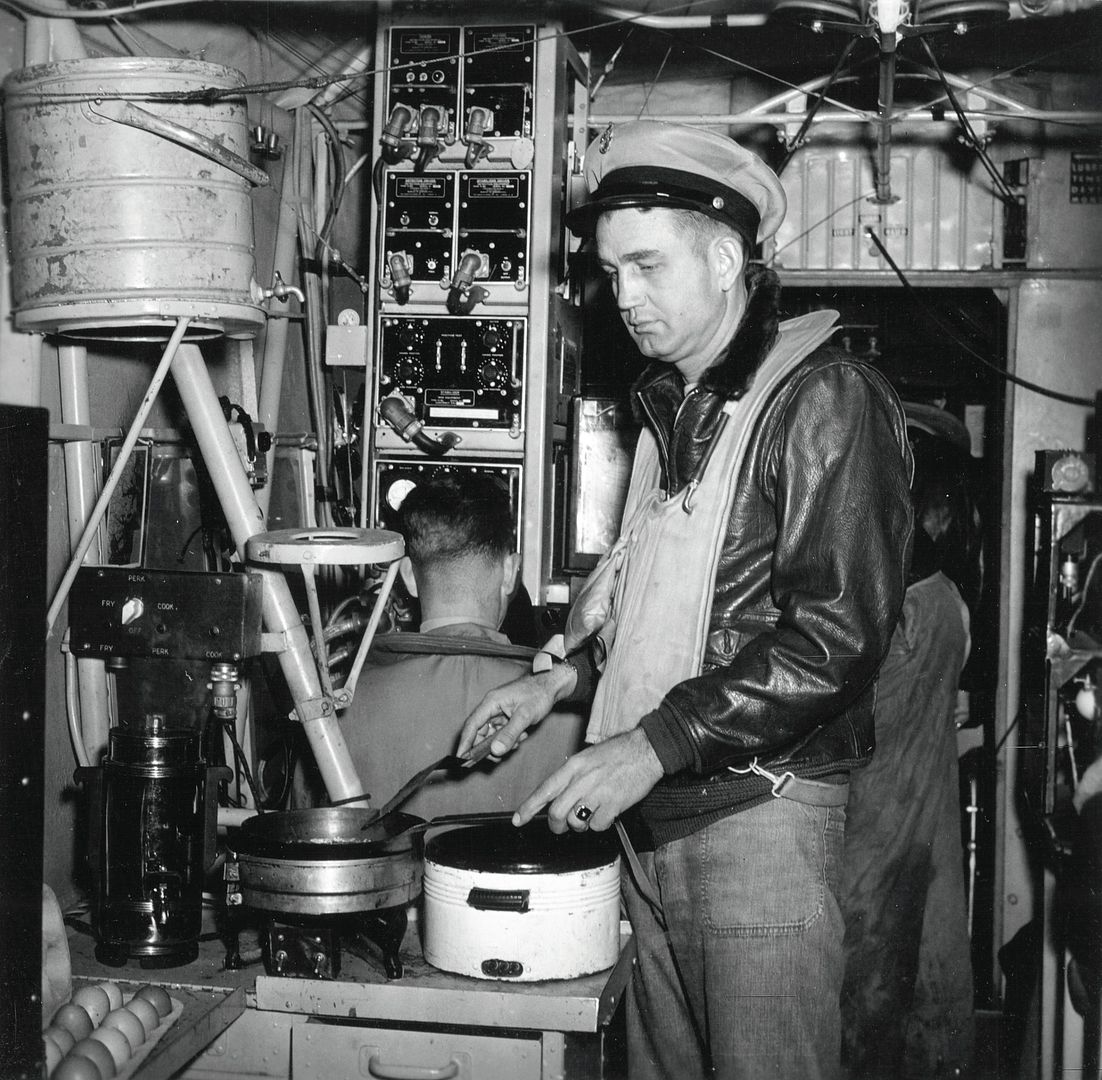
A member of the crew of airship K-28 U.S. Navy Airship Squadron 24 ZP-24 serves a meal to another crewman during an escort mission.
A flight engineer sets engines to full rich during fuel transfer during a patrol on K-28 a U.S. Navy Airship Squadron 24 airship.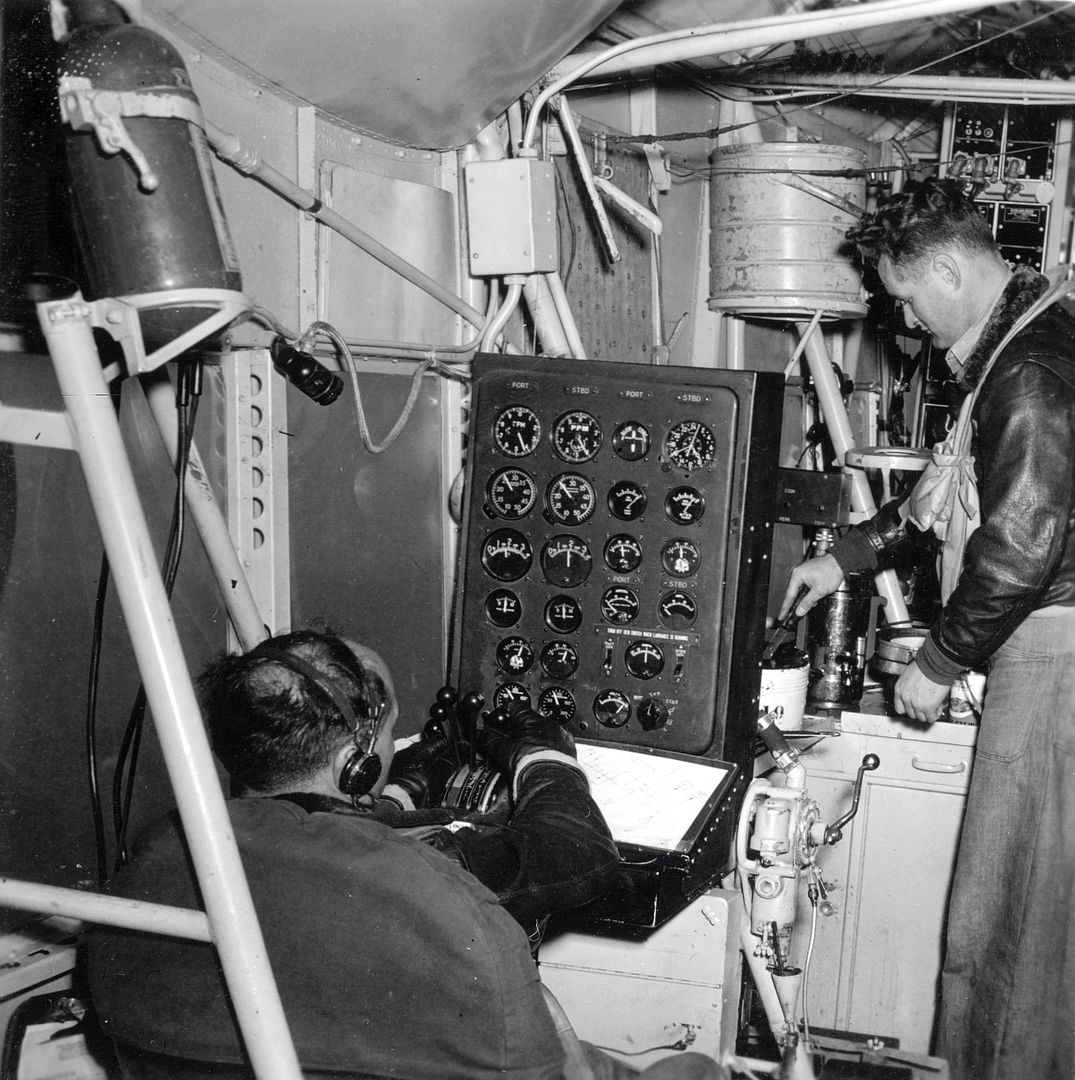
A crewman naps during a patrol on K-28 a U.S. Navy Airship Squadron 24 ZP-24 airship.
A crewman checks fuel levels during a patrol on K-28 a U.S. Navy Airship Squadron 24 ZP-24 airship.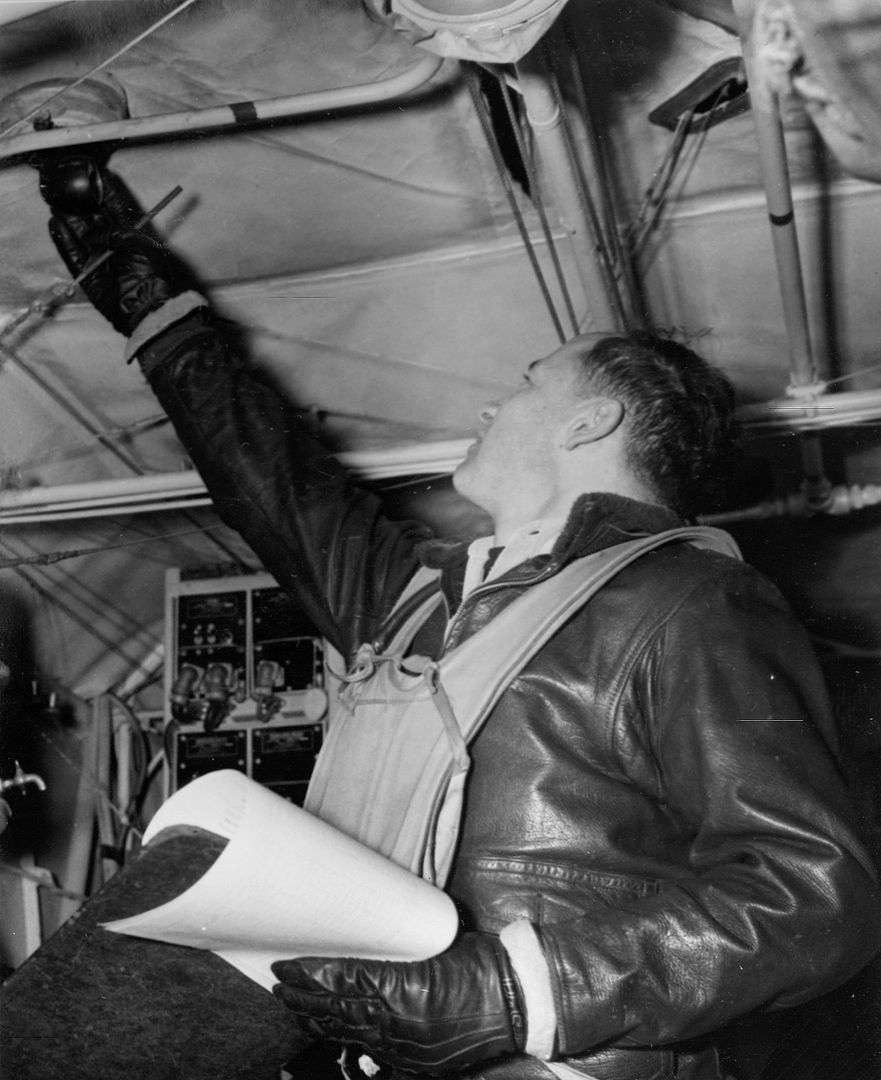
A crewman of K-28 a U.S. Navy Airship Squadron 24 ZP-24 blimp taking photographs out of the airships control car during a patrol.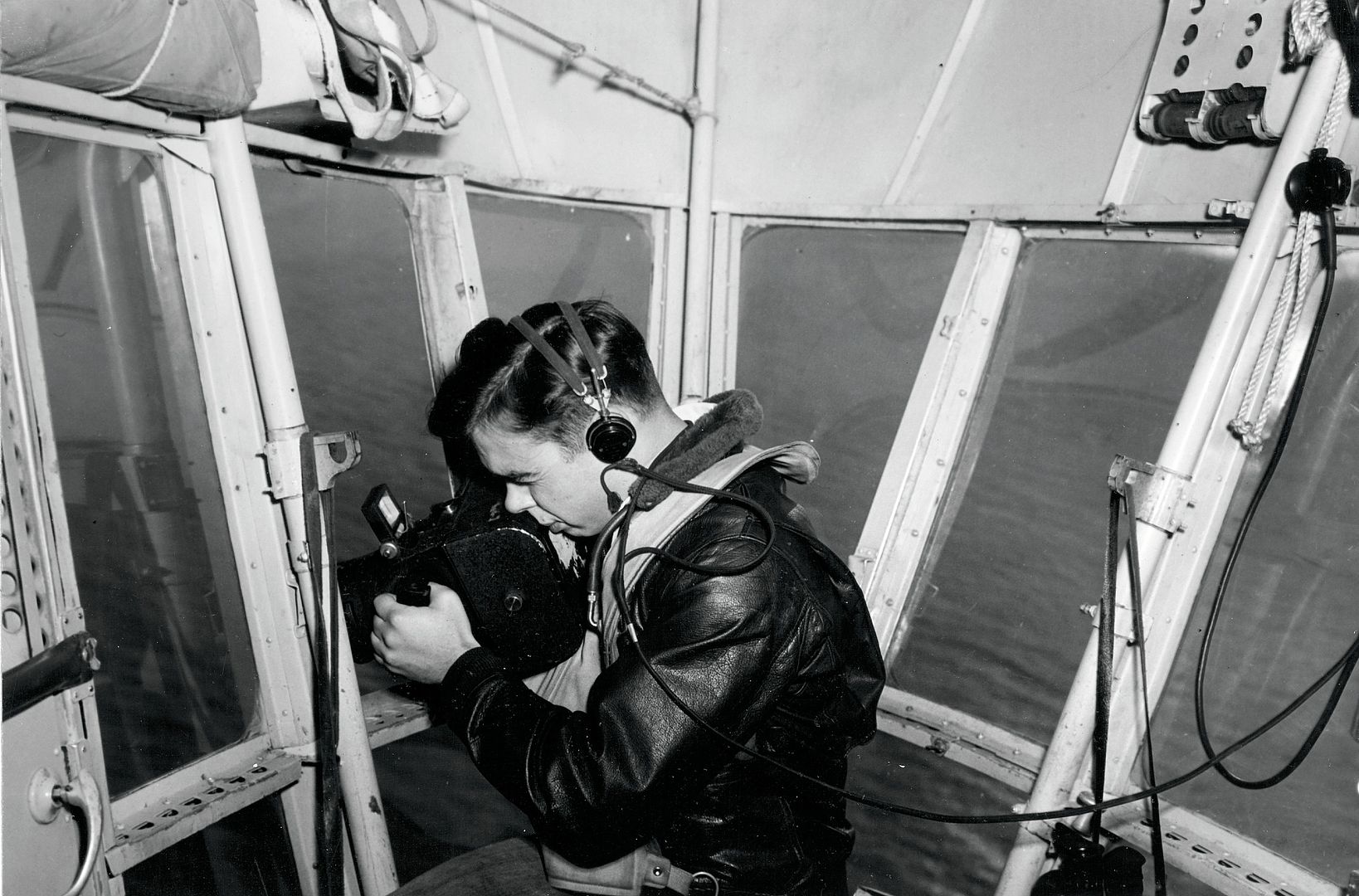
A crew member of K-28 U.S. Navy Airship Squadron 24 ZP-24 spots a ship during a patrol.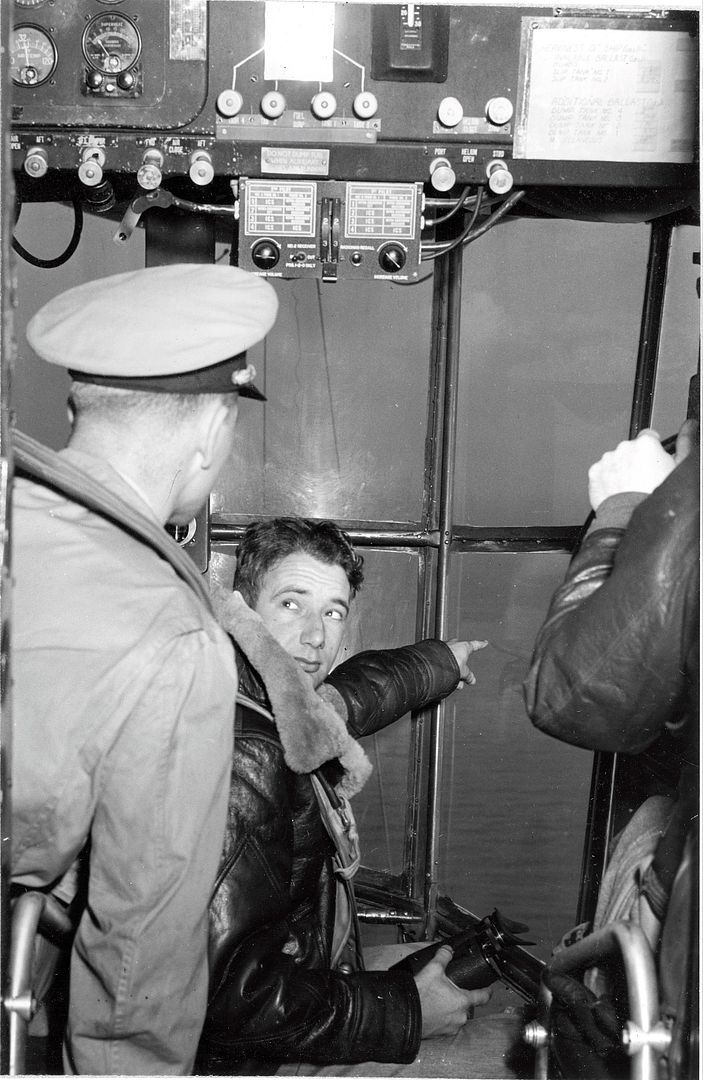
/A crewman on K-28 a U.S. Navy Airship Squadron 24 ZP-24 blimp signals the Escort Commander of an Allied convoy.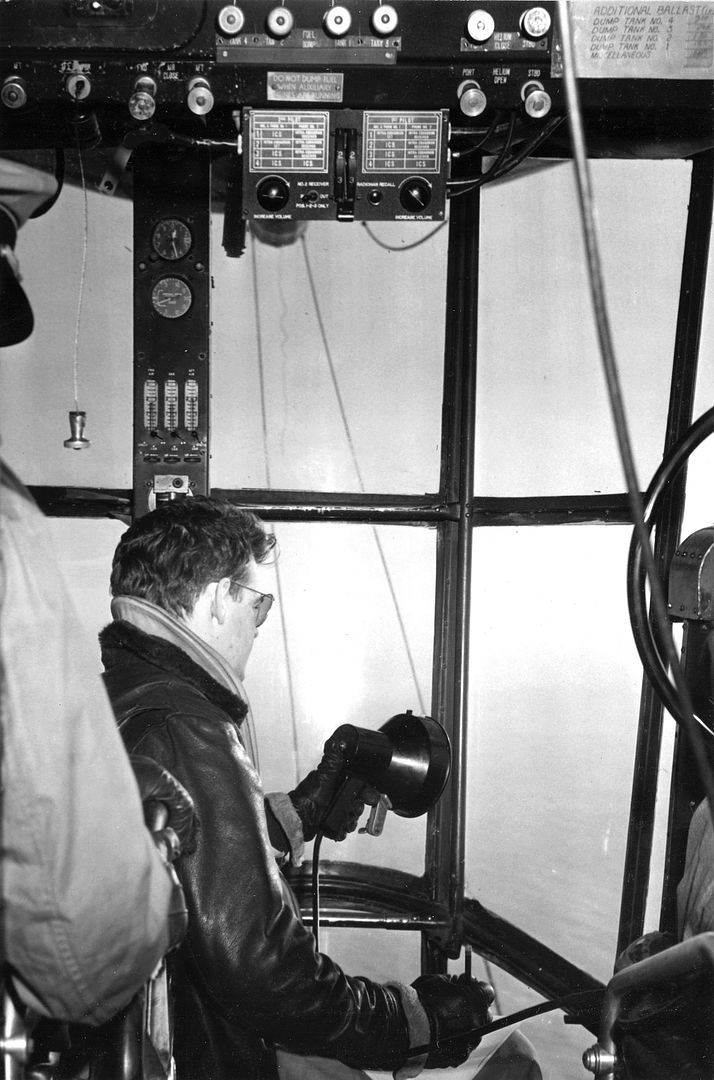
A member of the crew of K-28 U.S. Navy Airship Squadron 24 ZP-24 loads a flare into a chute at the start of a patrol.
The radioman on K-28 a U.S. Navy Airship Squadron 24 ZP-24 airship sending a message.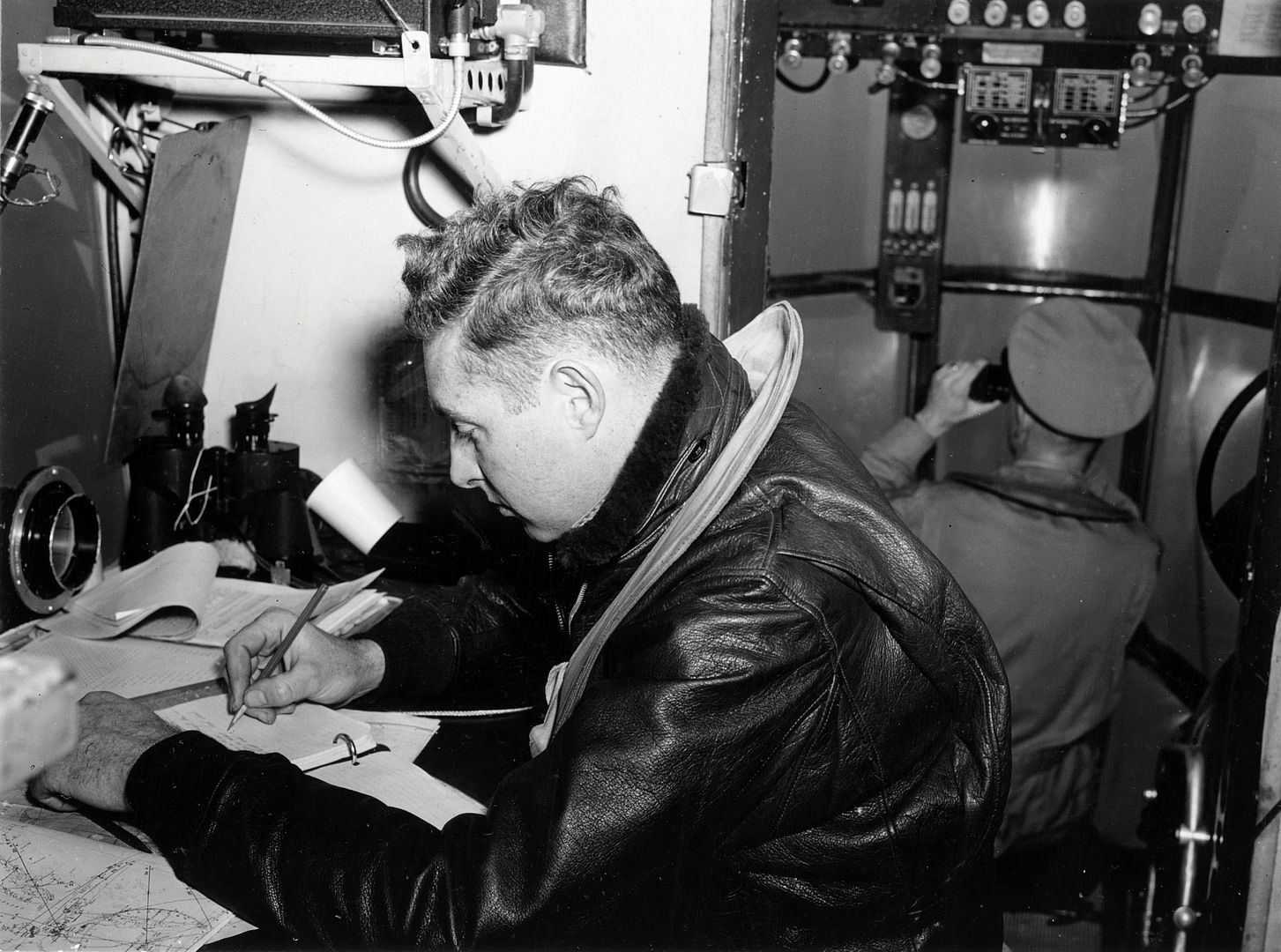
Crew members of K-28 a U.S. Navy Airship Squadron 24 ZP-24 airship at their duty stations during a patrol.
The pilot of K-28 a K type airship of U.S. Navy Airship Squadron 24 ZP-24 checking his intercom prior to a mission.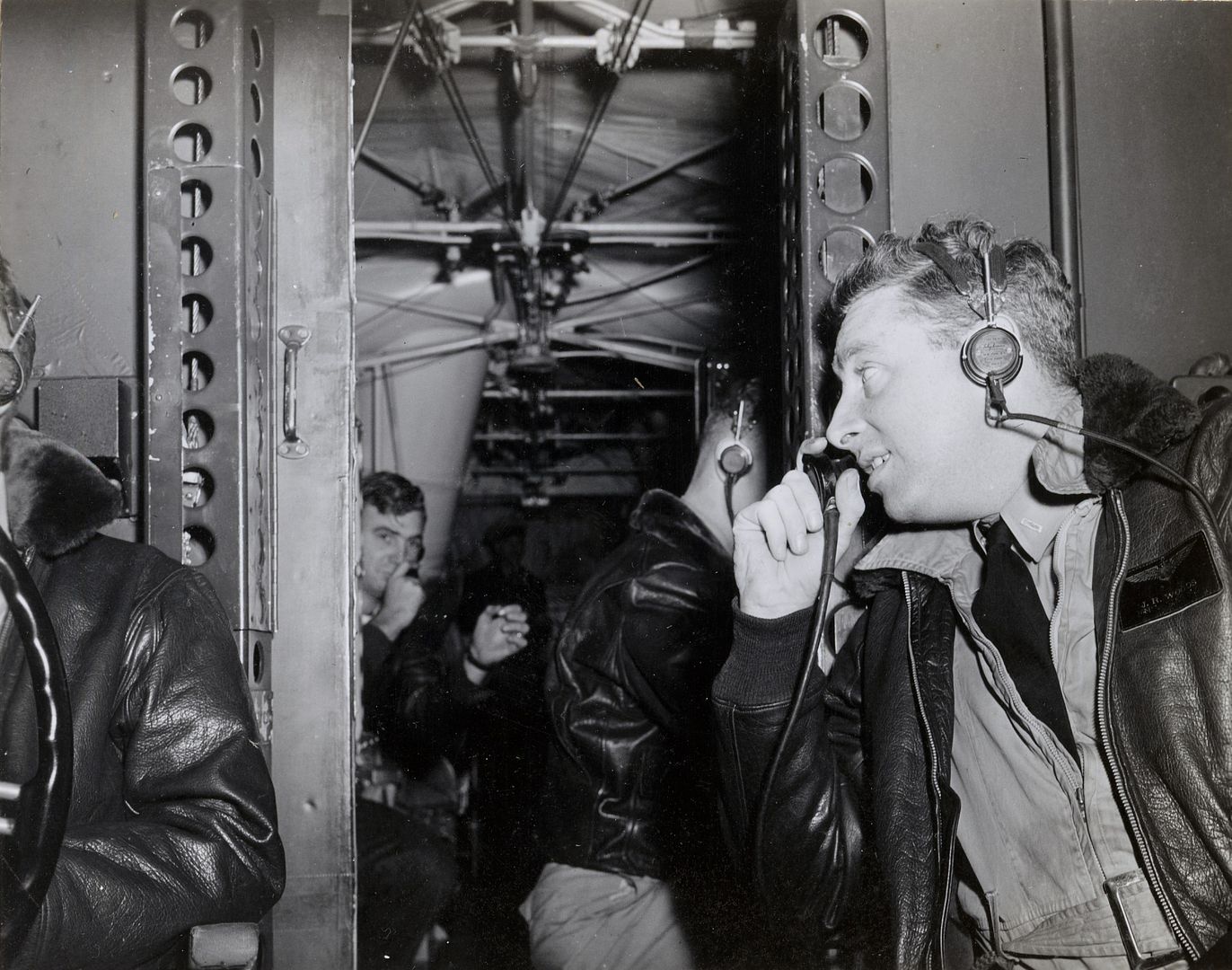
The navigator of K-28 a U.S. Navy Airship Squadron 24 ZP-24 airship corrects the airships course during a patrol.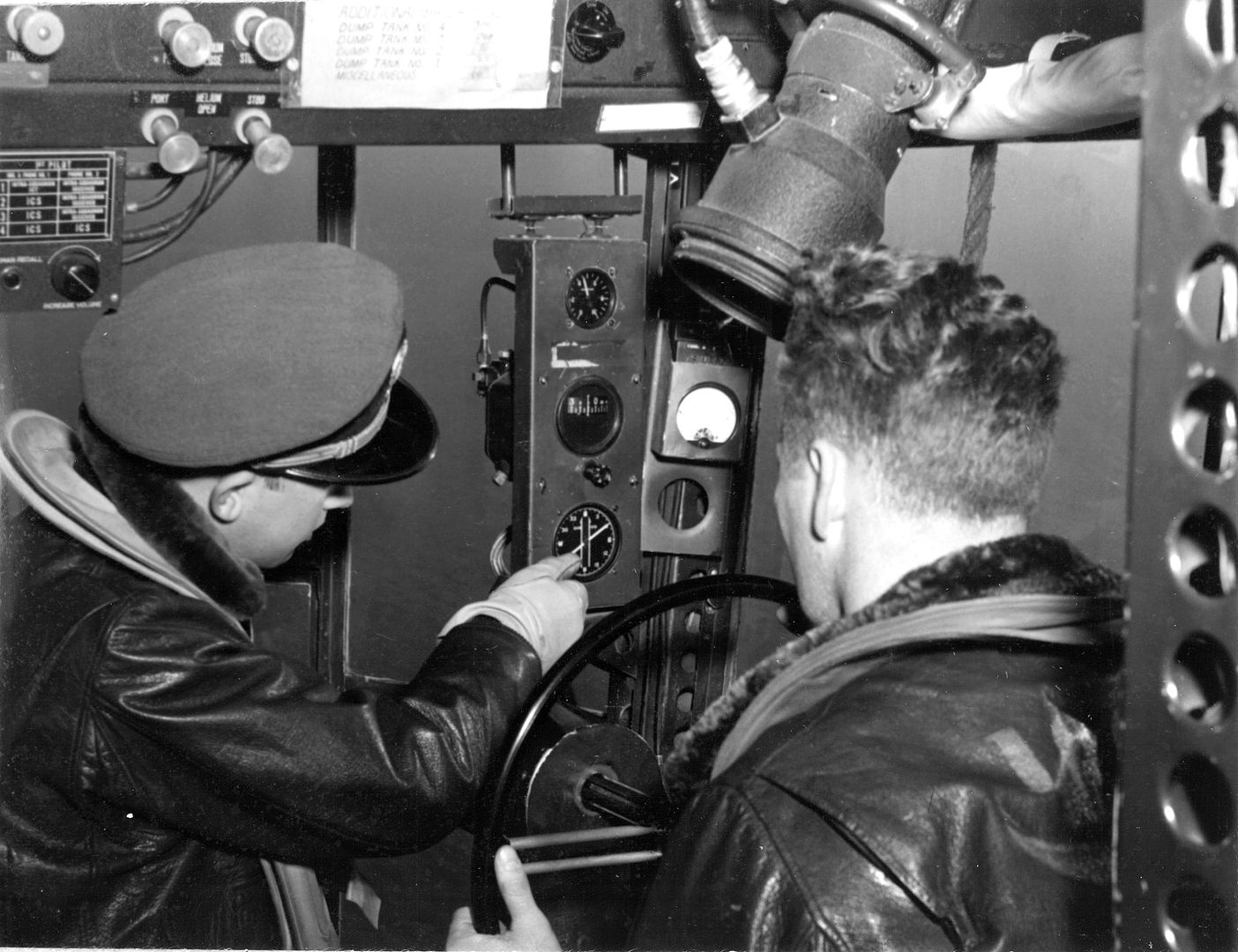
The navigator of K-28 a U.S. Navy Airship Squadron 24 ZP-24 airship checks his drift from the control car window during a patrol.
Crewmen transfer fuel during a patrol on board K-28 a U.S. Navy Airship Squadron 24 ZP-24 airship.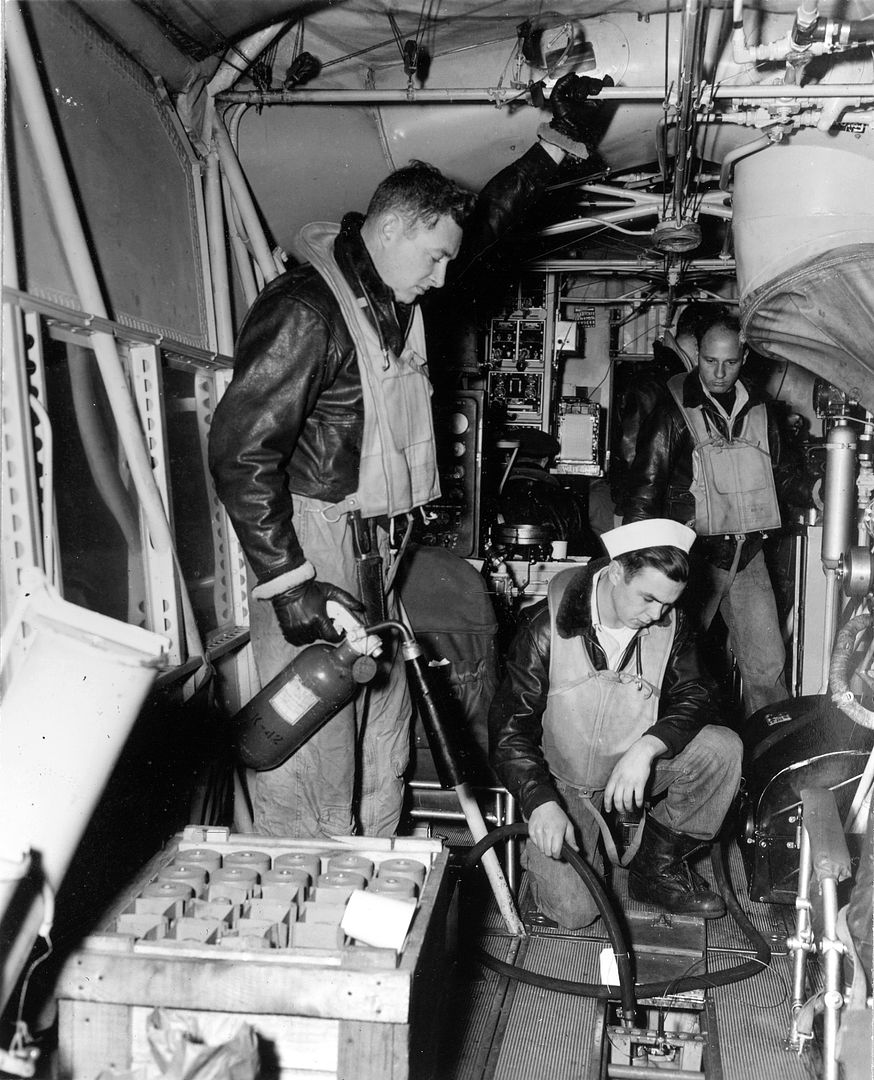
Two crew members of K-28 U.S. Navy Airship Squadron 24 ZP-24 keep watch while two other men rest.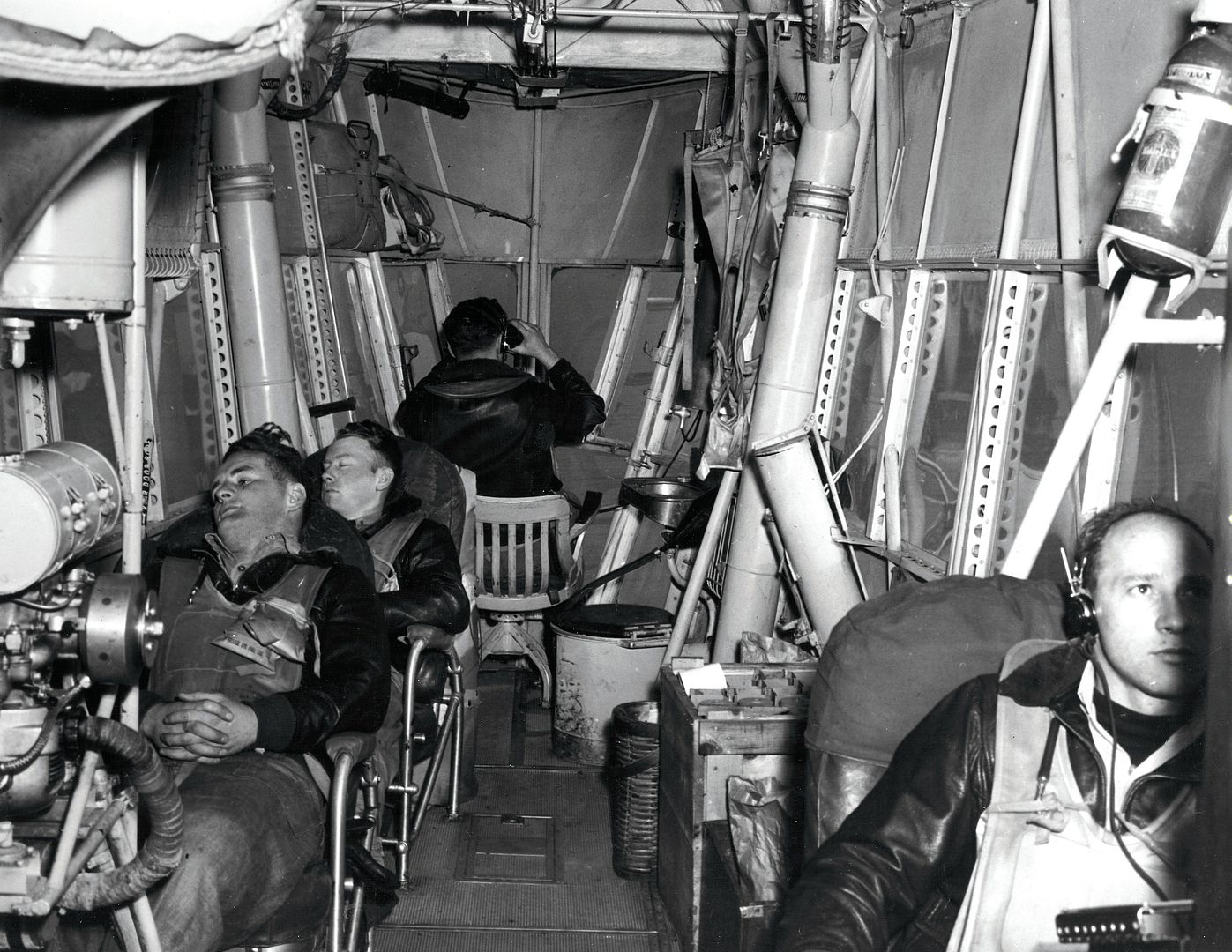
A navigator of U.S. Navy Airship Squadron 24 ZP-24 blimp K-28 plots a course during a mission.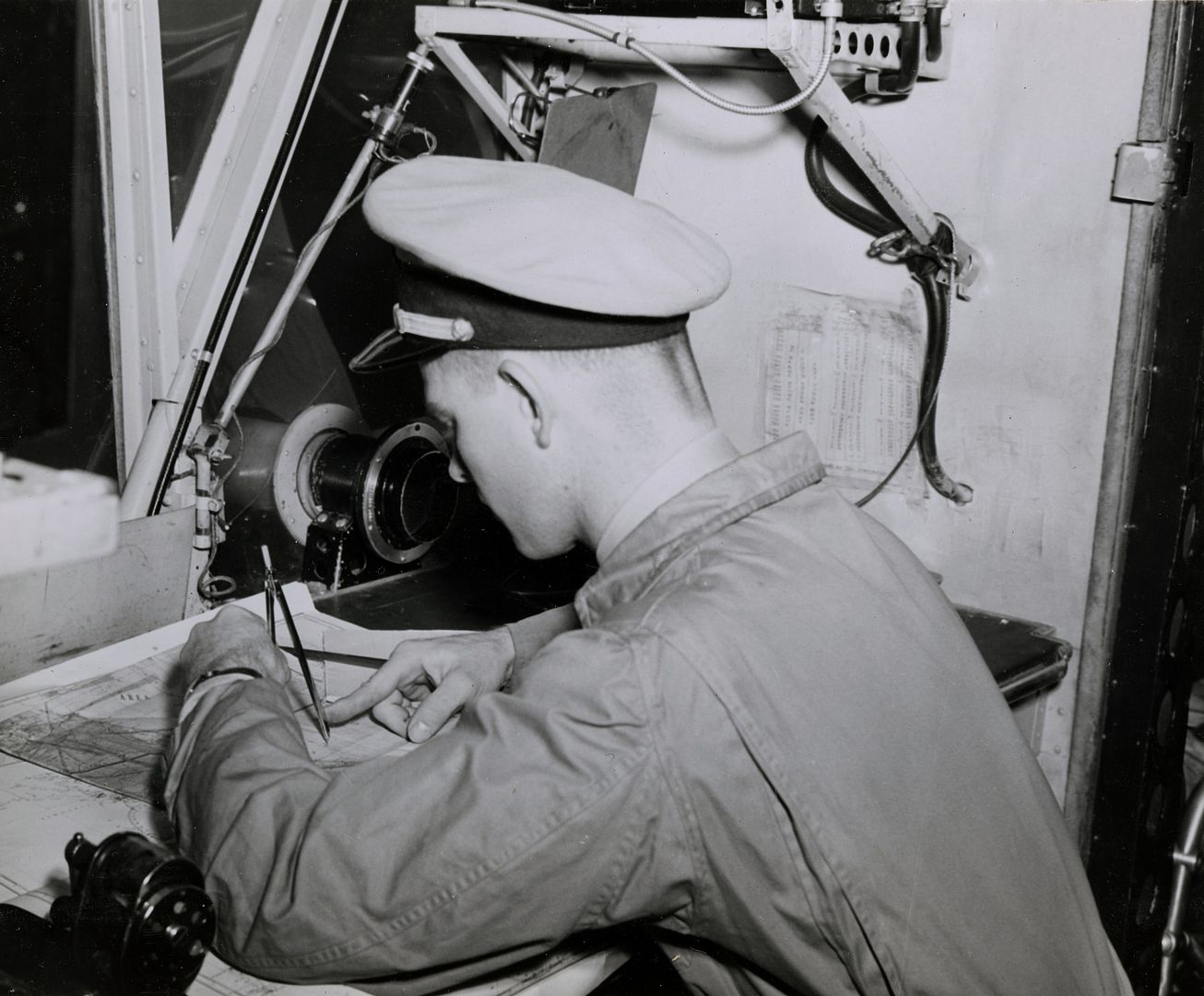
A member of the crew of K-28 U.S. Navy Airship Squadron 24 ZP-24 test fires a machine gun during a patrol.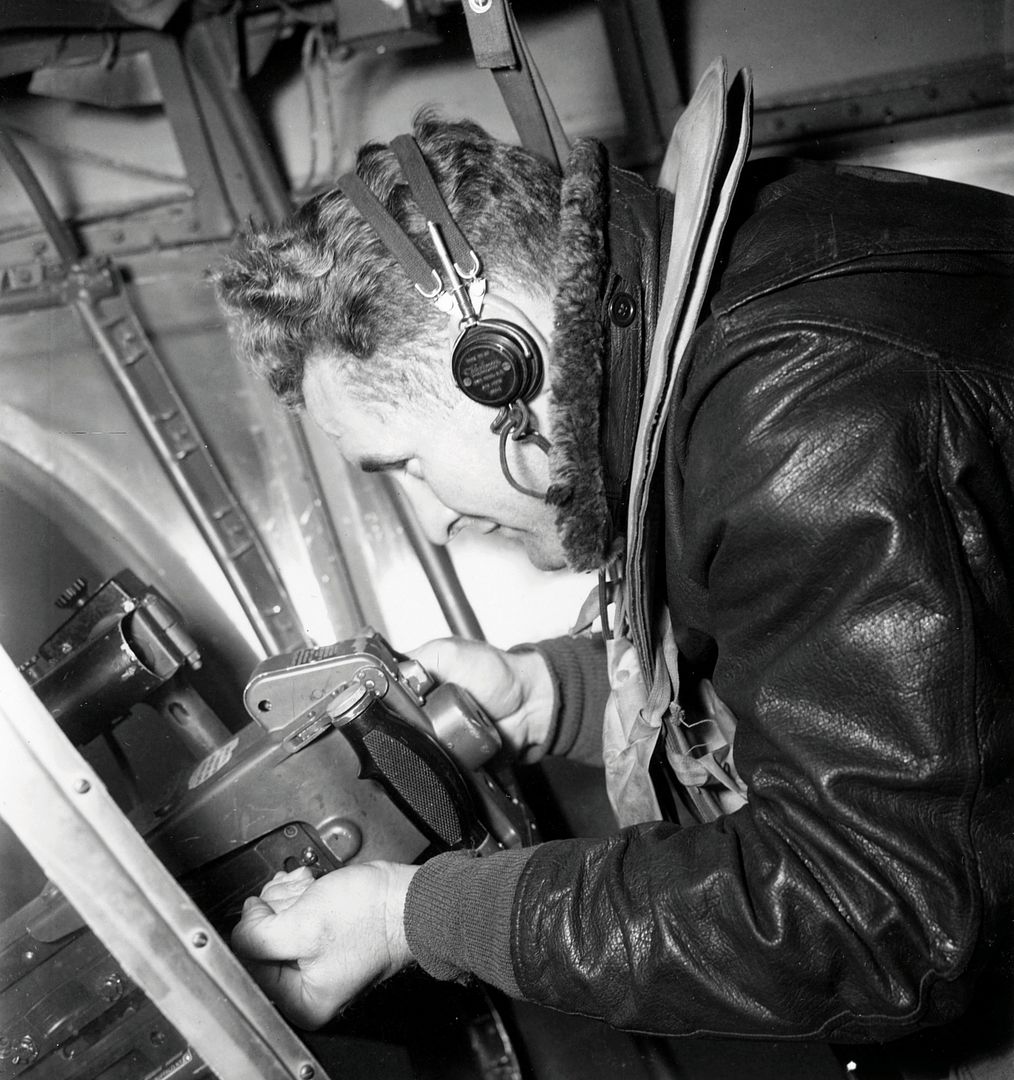
A U.S. Navy Airship Squadron 24 ZP-24 radioman at his station on board K-28 a K type airship during a mission.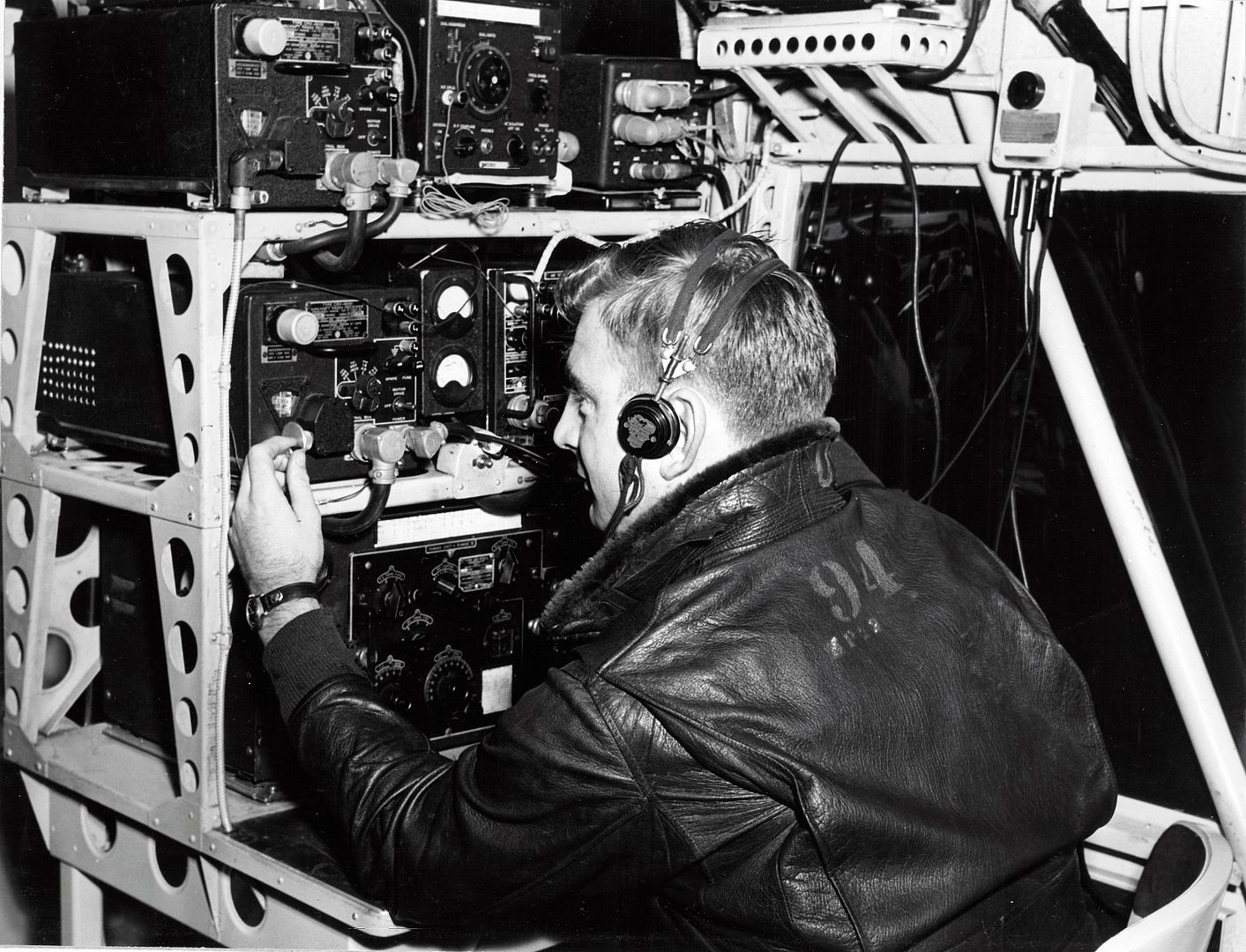
K-28 a U.S. Navy Airship Squadron 24 ZP-24 airship flies over a ship during a patrol.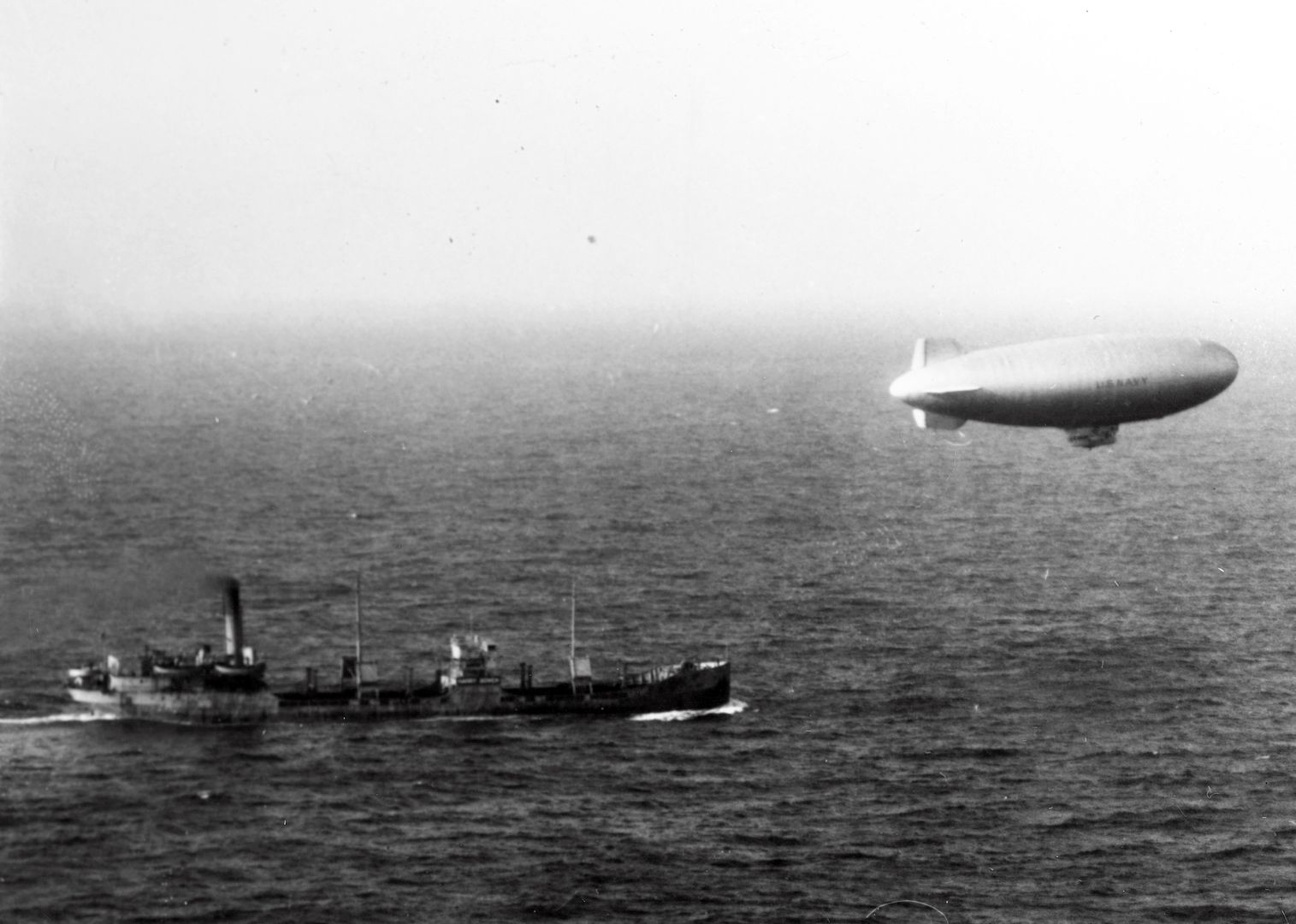
K-Type Blimp Is attached to a mooring mast at Naval Air Station Moffett Field California circa February 1944.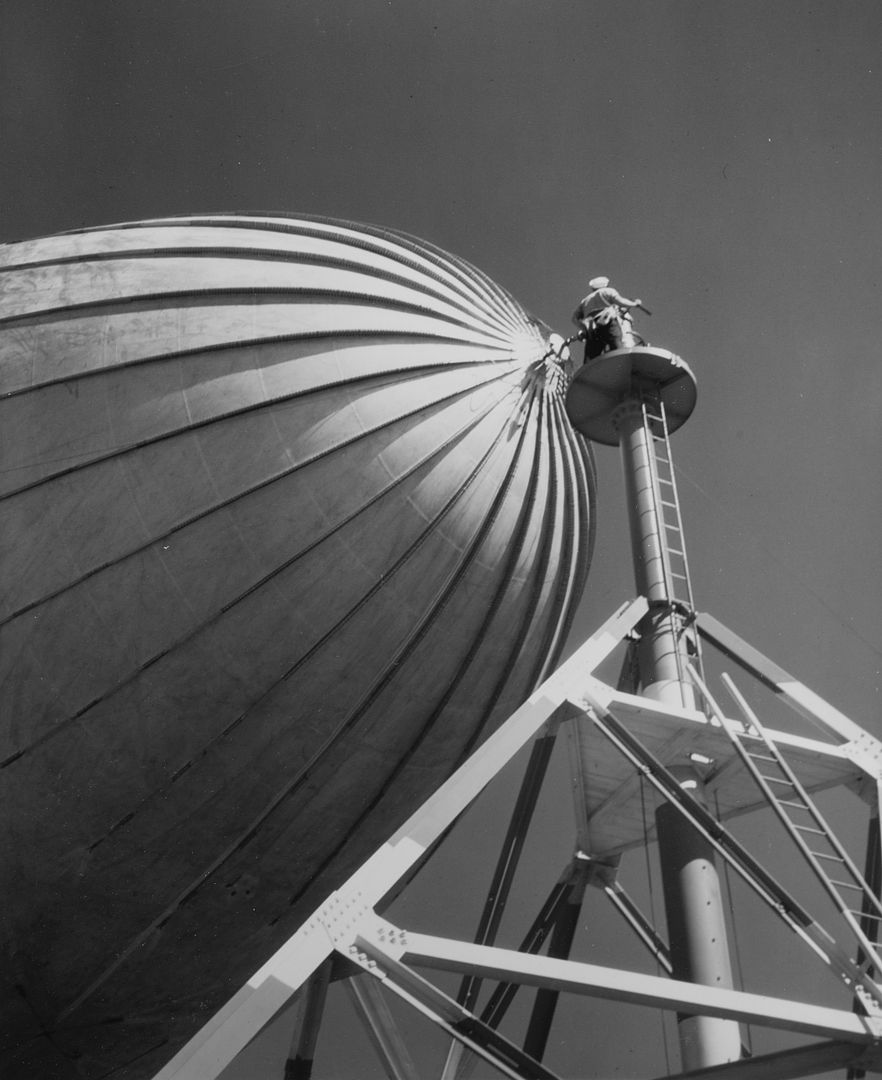
A K-class airship used for recruiting purposes flies over the airship hangar at Naval Air Station NAS Lakehurst New Jersey.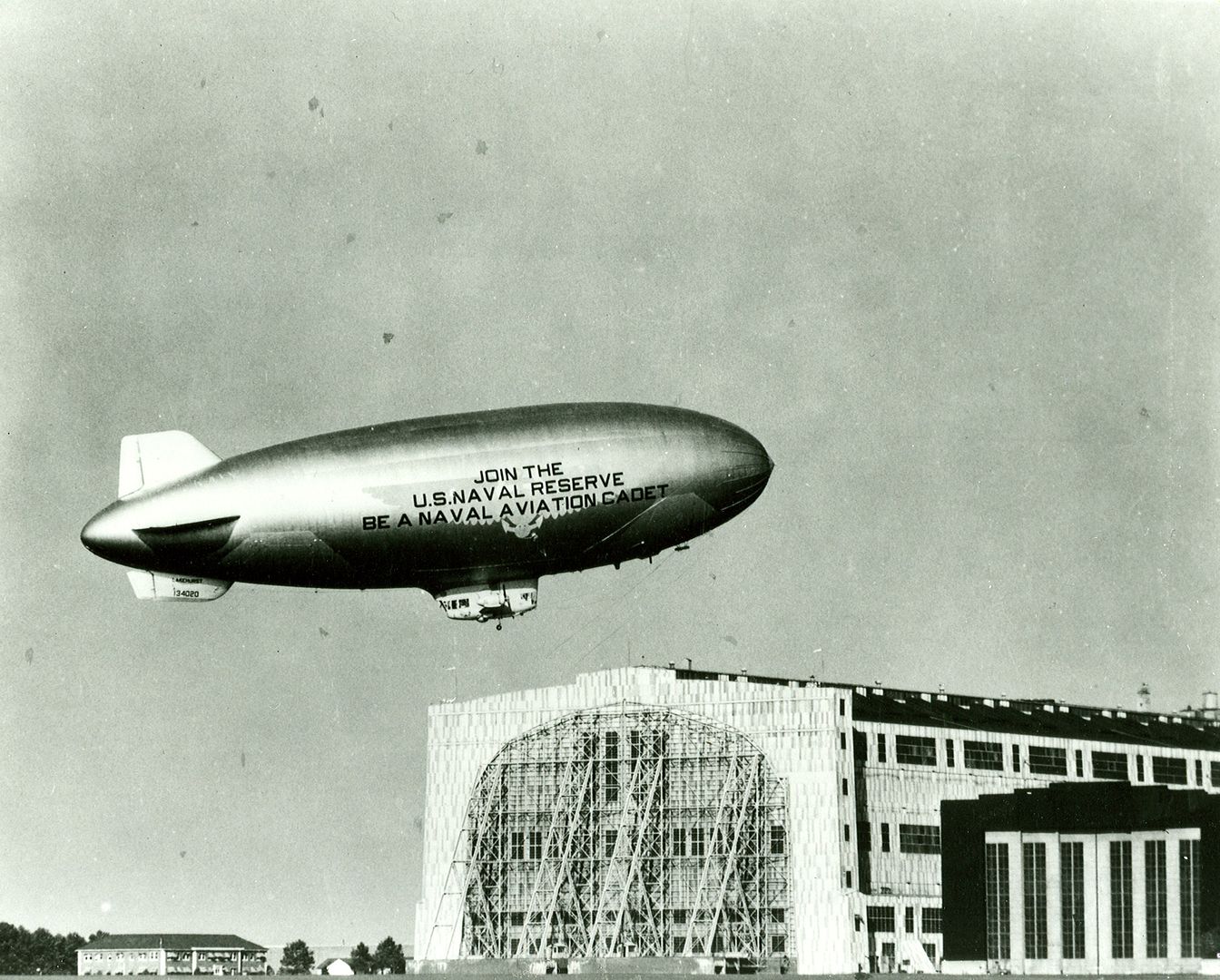
K-type Dirigible at ATC base Oran Algeria.
K-69 launches from the deck of the escort carrier Mindoro CVE 120.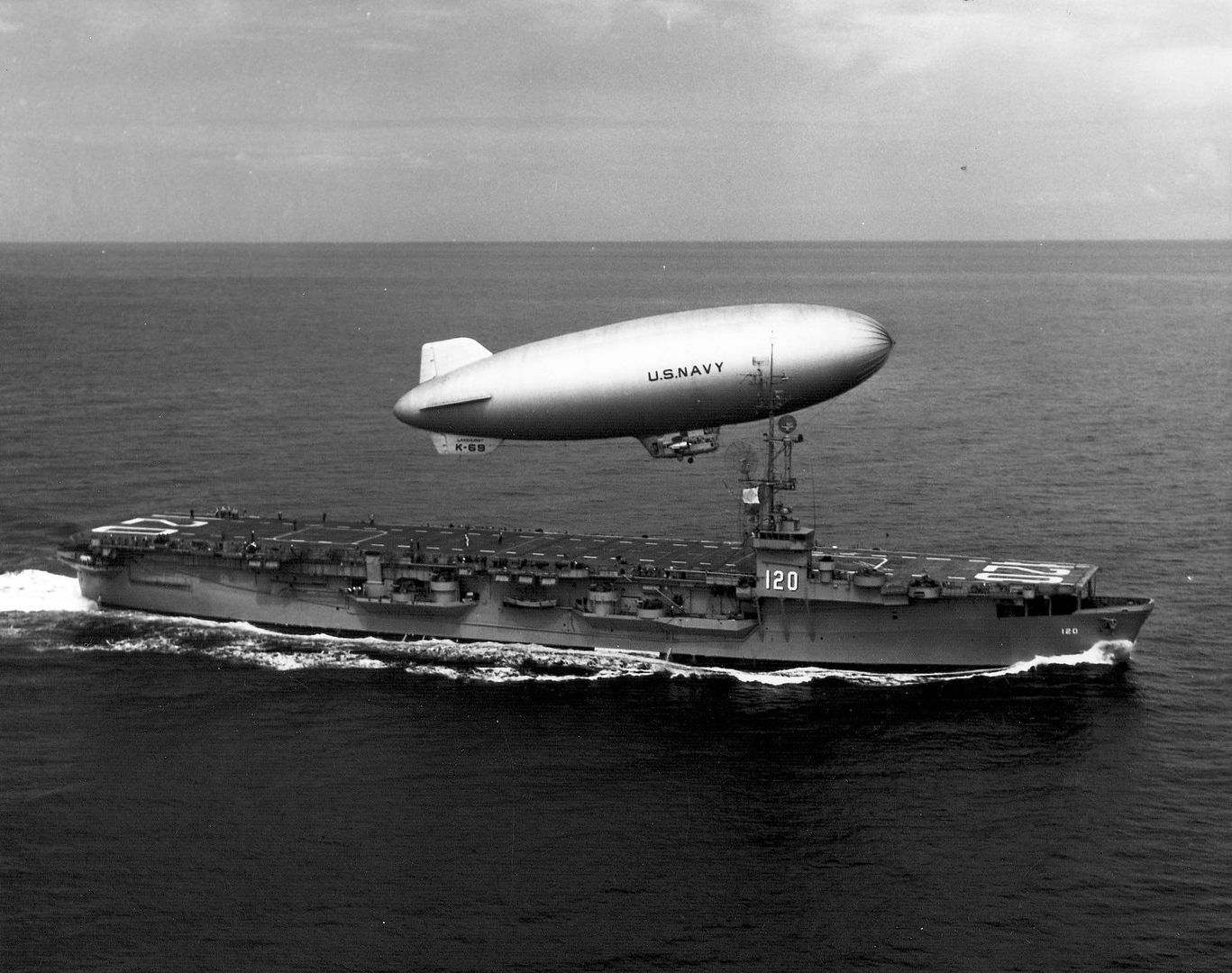
K-class airship of Blimp Patrol Squadron ZP 14 pictured in flight over the light aircraft carrier Langley CVL 27 as she steams in the waters off Norfolk Virginia.
A ZSG-3 blimp lands on the flight deck of the escort carrier Sicily CVE 118.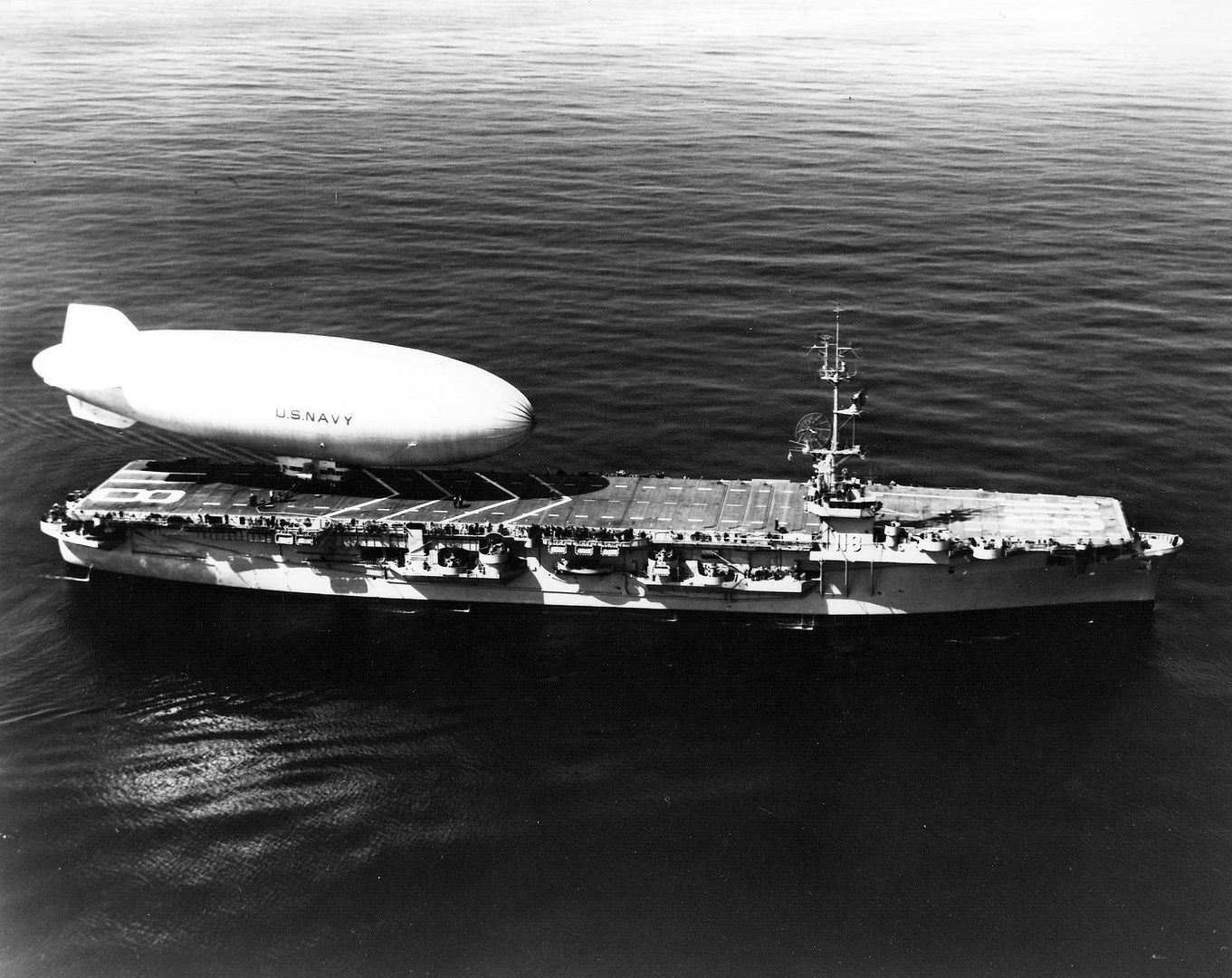
USS Missouri BB-63 Anchored in port during her shakedown cruise circa August 1944. A K-type blimp is overhead.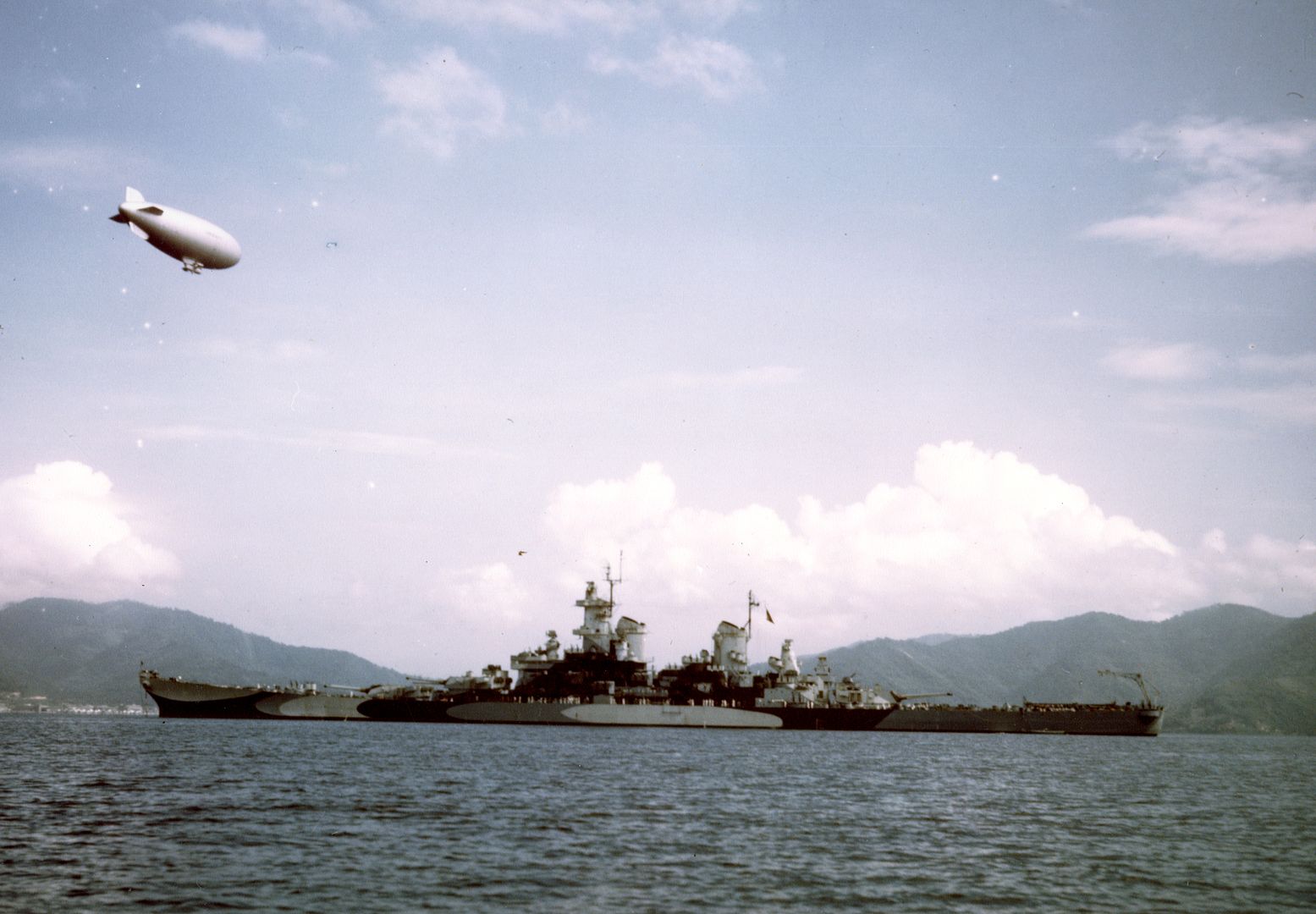

K-type Is towed toward a hangar after being secured to a portable mooring mast during World War II.
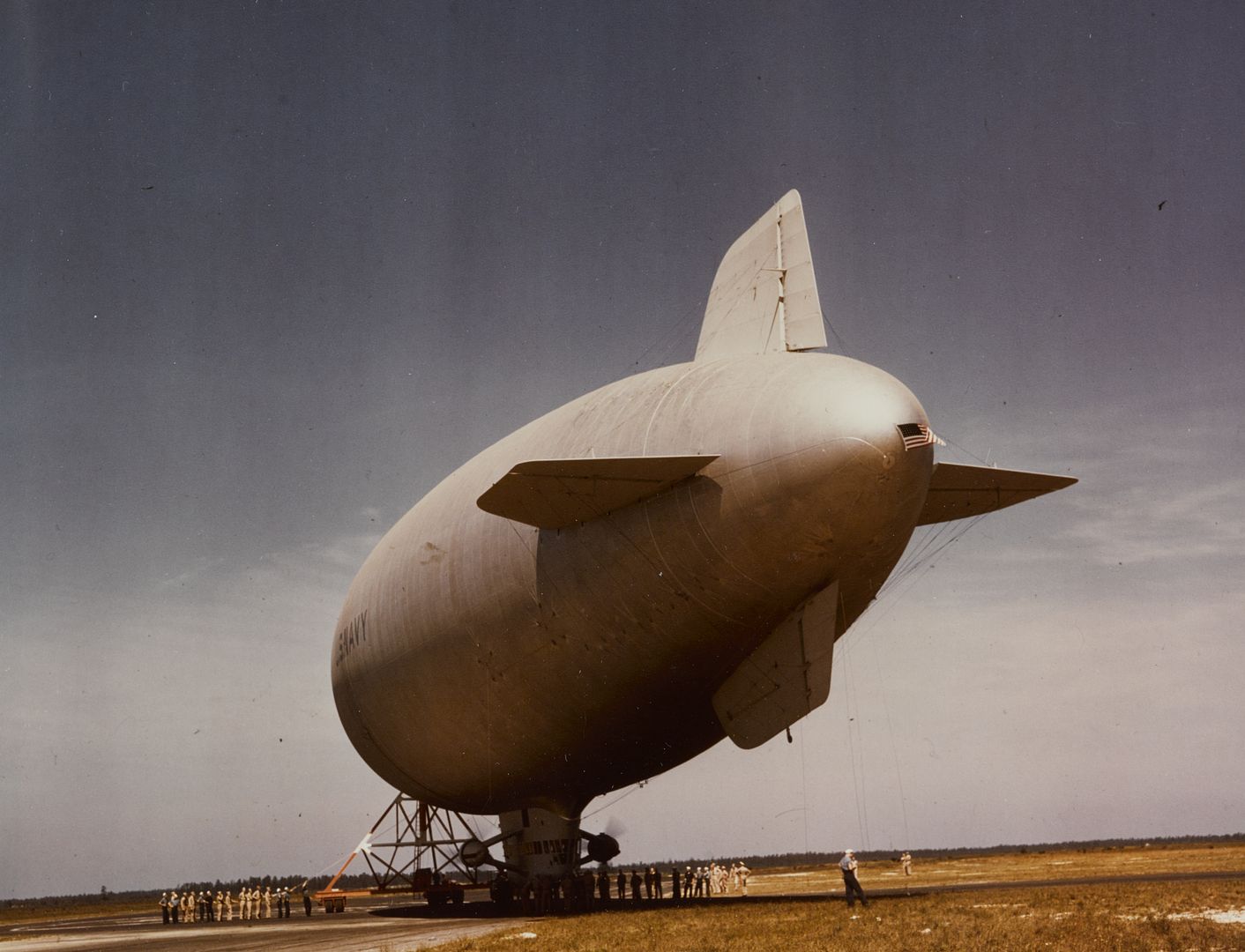
General characteristics
Crew: 9-10
Length: 251 ft 8 in (76.73 m)
Diameter: 57 ft 10 in (17.63 m)
Volume: 425,000 ft3 (12,043 m3)
Useful lift: 7,770 lb (3,524 kg)
Powerplant: 2 ? Pratt & Whitney R-1340-AN-2 radials, 425 hp (317 kW) each
Performance
Maximum speed: 78 mph (125 km/h)
Cruise speed: 58 mph (93 km/h)
Range: 2,205 miles (3,537 km)
Endurance: 38 hours 12 min
Armament
1 ? .50 in (12.7 mm) M2 Browning machine gun
4 ? 350 lb (160 kg) Mark 47 depth charges -
6 years agoThx !for sharing
-
 Main Admin
Main Admin
Post a reply
- Go to Previous topic
- Go to Next topic
- Go to Welcome
- Go to Introduce Yourself
- Go to General Discussion
- Go to Screenshots, Images and Videos
- Go to Off topic
- Go to Works in Progress
- Go to Skinning Tips / Tutorials
- Go to Skin Requests
- Go to IJAAF Library
- Go to Luftwaffe Library
- Go to RAF Library
- Go to USAAF / USN Library
- Go to Misc Library
- Go to The Ops Room
- Go to Made in Germany
- Go to Campaigns and Missions
- Go to Works in Progress
- Go to Juri's Air-Raid Shelter
- Go to Campaigns and Missions
- Go to Works in Progress
- Go to Skinpacks
- Go to External Projects Discussion
- Go to Books & Resources





